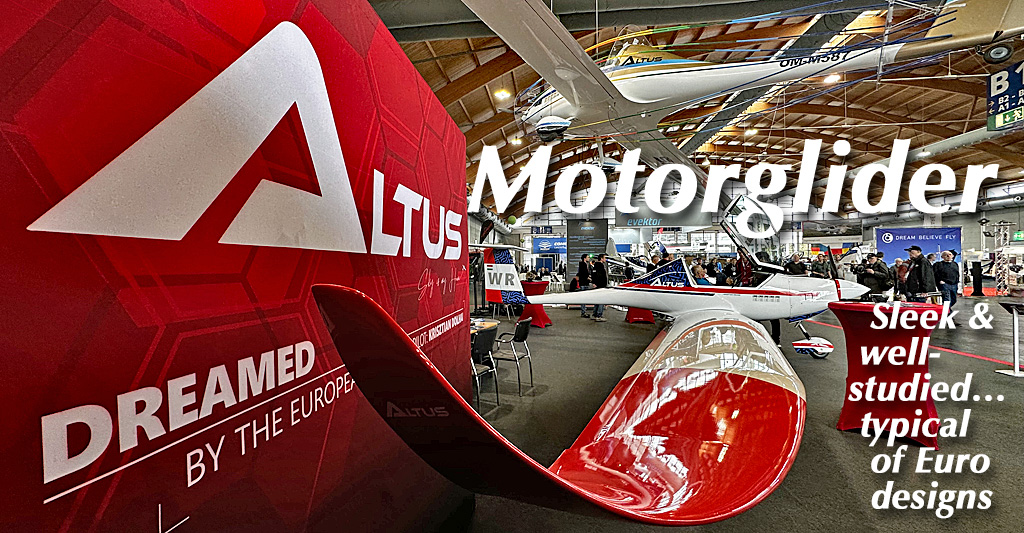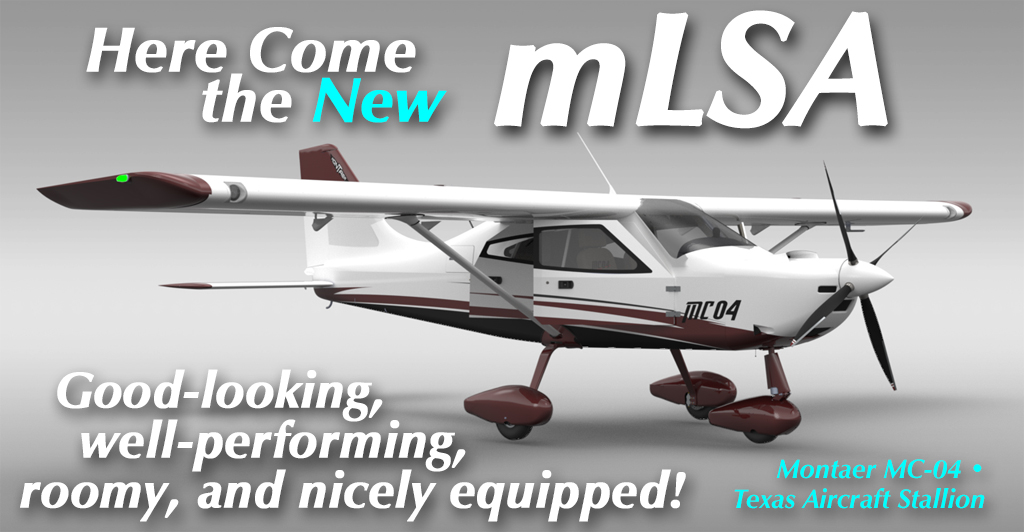
Is this an exciting time for aviation? Have you been one of the many pilots anticipating Mosaic and the promise it brings for more capable aircraft? The new proposal is loaded with ideas we requested. As with the SP/LSA rule of nineteen years ago, these features of Mosaic are stimulating all sorts of expectations …but also some worry. One concern is that new four-seat mLSA with all the bells and whistles will be expensive. Well, they will be — compared to current-day LSA. Yet they will still be half the price of a roughly comparable Part 23-certified aircraft. They will also perform better while using less fuel. Plus, they will be new and nicely equipped with the latest in digital instrumentation. Contrasting that is an entire fleet of legacy GA airplanes that many pilots have been yearning to fly using a Sport Pilot certificate (or using the no-medical feature of Sport Pilot with their higher FAA ticket).


 As with the SP/LSA rule of nineteen years ago, these features of Mosaic are stimulating all sorts of expectations …but also some worry.
One concern is that new four-seat mLSA with all the bells and whistles will be expensive. Well, they will be — compared to current-day LSA. Yet they will still be half the price of a roughly comparable Part 23-certified aircraft. They will also perform better while using less fuel. Plus, they will be new and nicely equipped with the latest in digital instrumentation.
As with the SP/LSA rule of nineteen years ago, these features of Mosaic are stimulating all sorts of expectations …but also some worry.
One concern is that new four-seat mLSA with all the bells and whistles will be expensive. Well, they will be — compared to current-day LSA. Yet they will still be half the price of a roughly comparable Part 23-certified aircraft. They will also perform better while using less fuel. Plus, they will be new and nicely equipped with the latest in digital instrumentation.
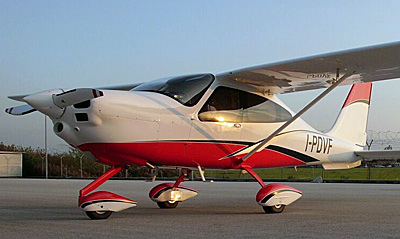
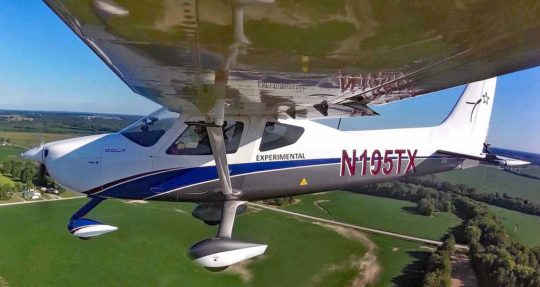
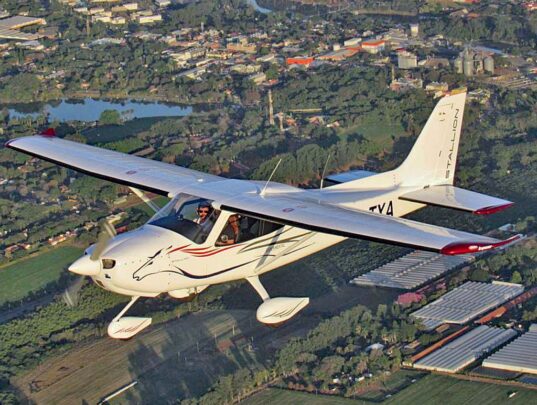
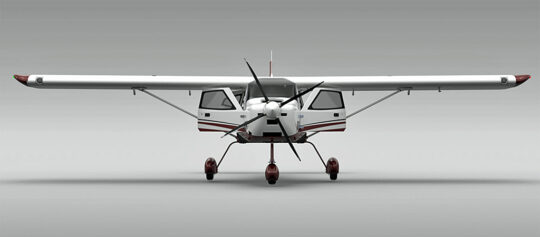
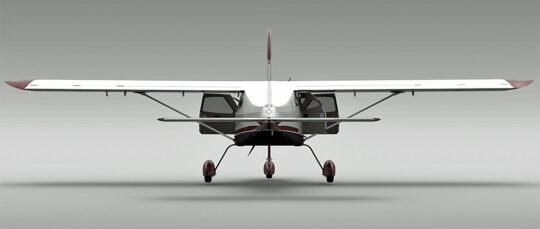 "Now, with the advent of FAA’s Mosaic," continued Shalom, "MC-04 enters the market as a 'family-size' aircraft that boasts a formidable powerplant, the turbocharged Rotax 916iS with 160 horsepower that gives cruising speeds of 132 knots while ranging of 800 nautical miles, and a rate of climb hitting 1,300 feet per minute."
"Safety remains at the heart of Montaer's design philosophy; MC-04 is a testament to this unwavering commitment," said Shalom. "Its all-metal fuselage/wings/tail, welded 4130 molybdenum steel tube passenger safety cell, and solid metal rivets provide a robust structure, ensuring peace of mind during every flight. And for added reassurance, pilots can opt for a ballistic parachute."
"Now, with the advent of FAA’s Mosaic," continued Shalom, "MC-04 enters the market as a 'family-size' aircraft that boasts a formidable powerplant, the turbocharged Rotax 916iS with 160 horsepower that gives cruising speeds of 132 knots while ranging of 800 nautical miles, and a rate of climb hitting 1,300 feet per minute."
"Safety remains at the heart of Montaer's design philosophy; MC-04 is a testament to this unwavering commitment," said Shalom. "Its all-metal fuselage/wings/tail, welded 4130 molybdenum steel tube passenger safety cell, and solid metal rivets provide a robust structure, ensuring peace of mind during every flight. And for added reassurance, pilots can opt for a ballistic parachute."
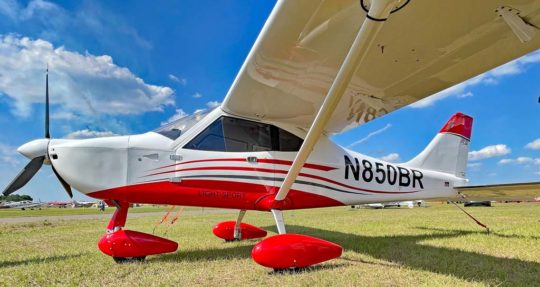
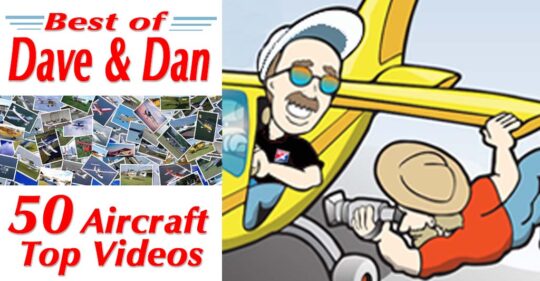 It's a pecking order thing, I suppose, a natural human response, but I dislike when one aviator puts down another. Is a hang glider pilot somehow less than a power pilot? Is a LSA pilot doing a lesser job flying than a GA pilot? Indeed, is the humble prop pilot somehow less than a jet pilot? Are pilots who like rotary or seaplanes oddballs? I think not but such opinions are too-commonly heard.
Similarly, why are pilots so ill-informed about Part 103? Most pilots have heard of the category yet most of them know next-to nothing about the aircraft type. Contrarily, I can say this: the ones who learn about Aerolite 103 know this is a right-proper light aircraft and they want more… for less.
It's a pecking order thing, I suppose, a natural human response, but I dislike when one aviator puts down another. Is a hang glider pilot somehow less than a power pilot? Is a LSA pilot doing a lesser job flying than a GA pilot? Indeed, is the humble prop pilot somehow less than a jet pilot? Are pilots who like rotary or seaplanes oddballs? I think not but such opinions are too-commonly heard.
Similarly, why are pilots so ill-informed about Part 103? Most pilots have heard of the category yet most of them know next-to nothing about the aircraft type. Contrarily, I can say this: the ones who learn about Aerolite 103 know this is a right-proper light aircraft and they want more… for less.
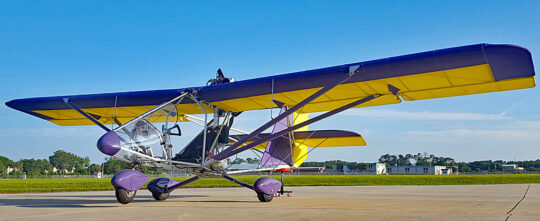 As a single point, price is important to nearly all consumers. Even in 2023, Aerolite 103 is available for around $25,000 (details below). That price comes after three years of high inflation (you know how many prices have increased significantly), after the upset of Covid and its effect on supply chains, after quadrupled shipping costs, and after the outbreak of hostilities in Ukraine. Despite an overload of upsetting, price-increasing actions,
As a single point, price is important to nearly all consumers. Even in 2023, Aerolite 103 is available for around $25,000 (details below). That price comes after three years of high inflation (you know how many prices have increased significantly), after the upset of Covid and its effect on supply chains, after quadrupled shipping costs, and after the outbreak of hostilities in Ukraine. Despite an overload of upsetting, price-increasing actions, 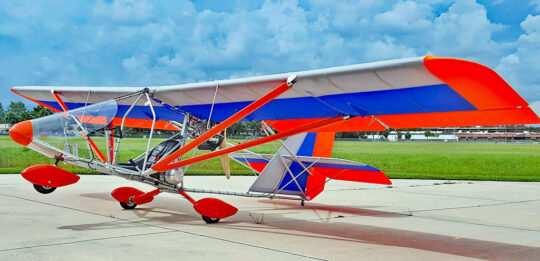 Dennis moved
Dennis moved 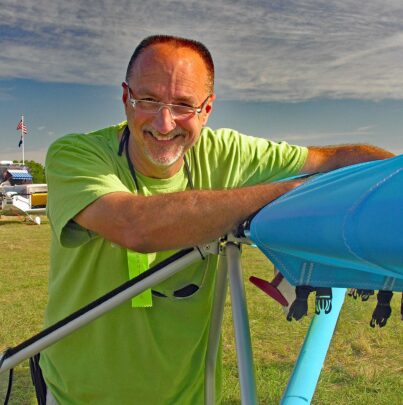
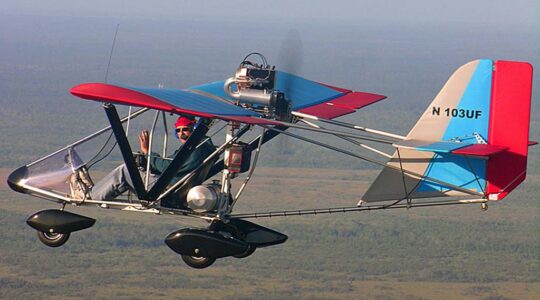 I love the Aerolite 103. I flew one on several occasions and found it a friendly flying machine with no evil qualities that will fly exactly as you’d expect.
I love the Aerolite 103. I flew one on several occasions and found it a friendly flying machine with no evil qualities that will fly exactly as you’d expect.
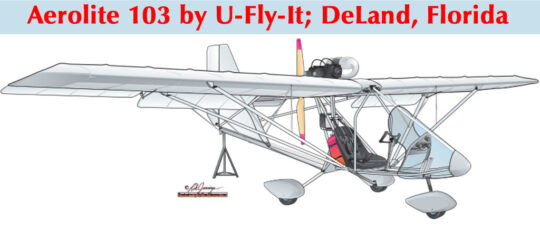
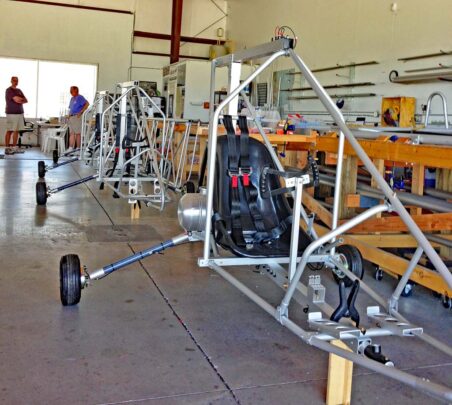 Add a fuel engine from Hirth or MZ for 28 to 50 horsepower for a cost of $6,500 to $13,500. You can also choose an electric option that runs from $10-14,000.
A fully-assembled Aerolite 103 runs from $27-35,000 depending primarily on engine selection.
Add a fuel engine from Hirth or MZ for 28 to 50 horsepower for a cost of $6,500 to $13,500. You can also choose an electric option that runs from $10-14,000.
A fully-assembled Aerolite 103 runs from $27-35,000 depending primarily on engine selection.
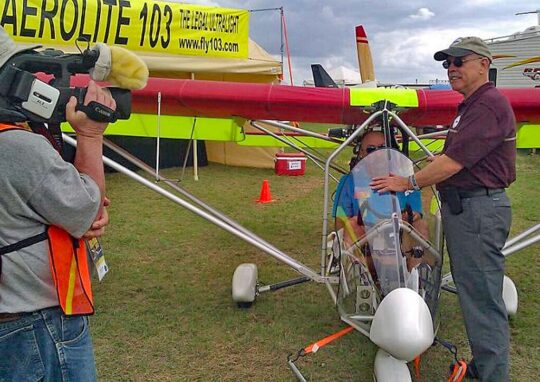
 Here is the video viewed more than 400,000 times, with original developer Terry Raber.
https://youtu.be/_Lhz0JwxkQA
Here is a video with then-new owner Dennis Carley going over details of
Here is the video viewed more than 400,000 times, with original developer Terry Raber.
https://youtu.be/_Lhz0JwxkQA
Here is a video with then-new owner Dennis Carley going over details of 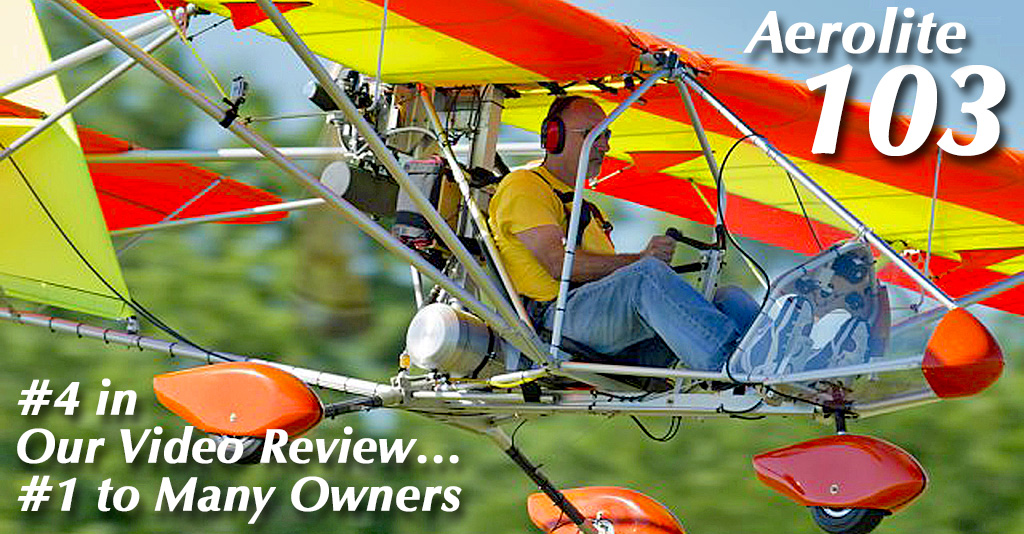
 Oshkosh has something for every pilot and more than any one person can see.
I'll mention this news briefly as I wish to pay respect to fellow pilots. Two crashes on the weekend after we departed resulted in four fatalities reportedly including one passenger. My sincere condolences to the surviving families. Oshkosh has had safe years with no loss of life but when so many airplanes assemble, mathematical odds suggest a crash is going happen despite heroic efforts to make the event as safe as possible.
Oshkosh has something for every pilot and more than any one person can see.
I'll mention this news briefly as I wish to pay respect to fellow pilots. Two crashes on the weekend after we departed resulted in four fatalities reportedly including one passenger. My sincere condolences to the surviving families. Oshkosh has had safe years with no loss of life but when so many airplanes assemble, mathematical odds suggest a crash is going happen despite heroic efforts to make the event as safe as possible.
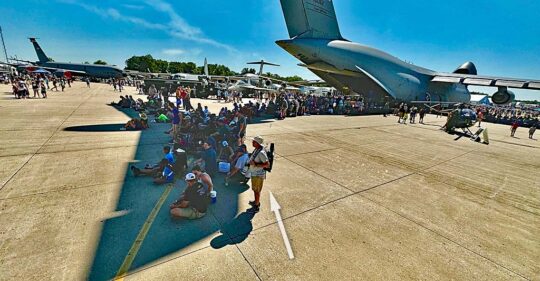
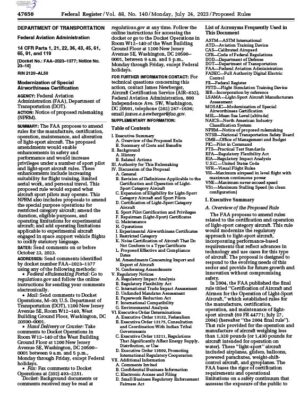
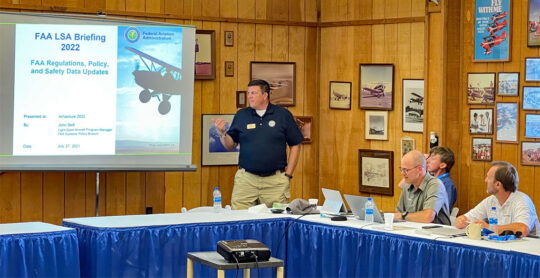
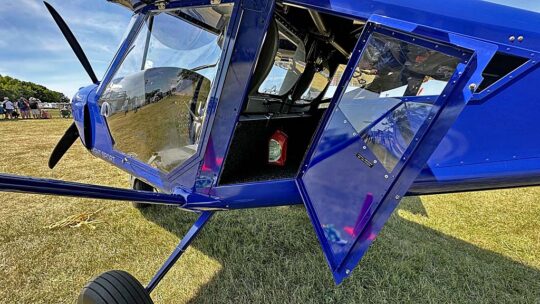 AEROPRAKT
AEROPRAKT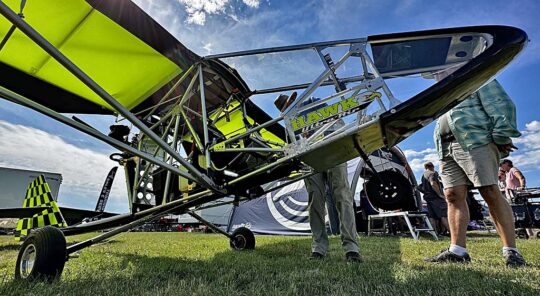 HAWK ULTRA AIR
HAWK ULTRA AIR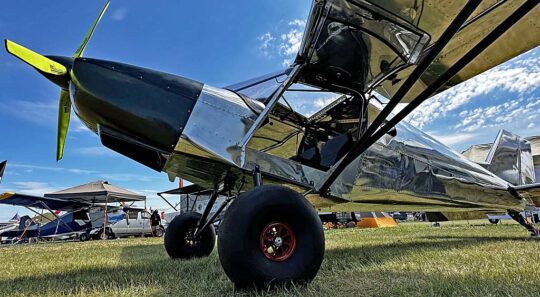 AQUILAE
AQUILAE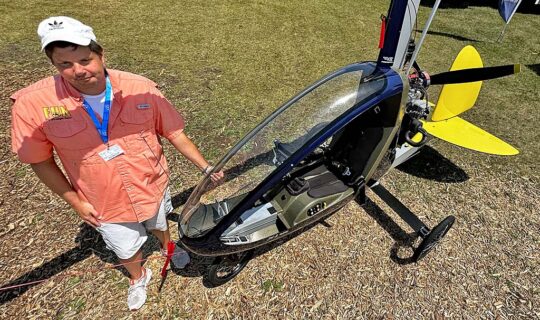 FUSION NANO GYRO
FUSION NANO GYRO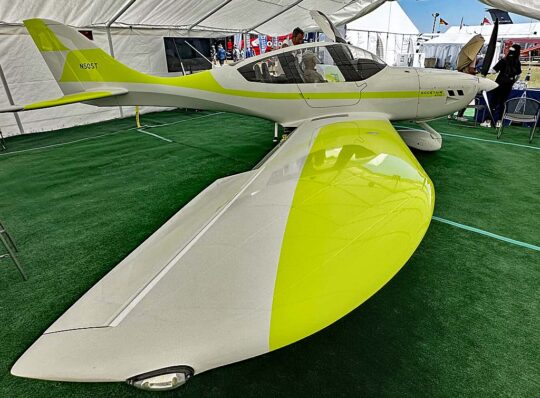 GOGETAIR 750
GOGETAIR 750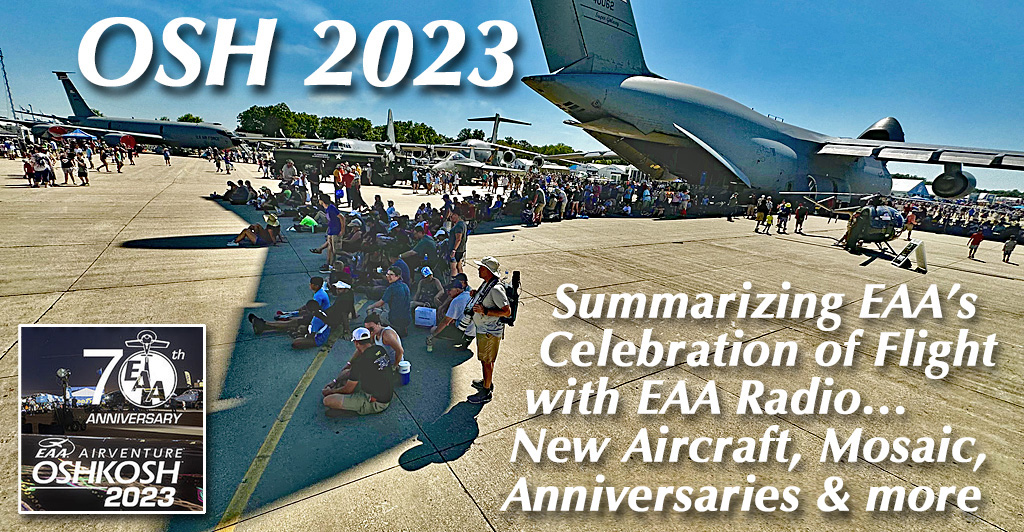
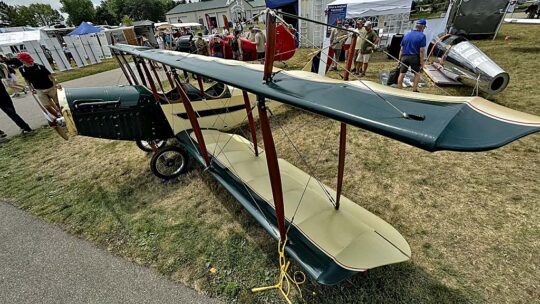 All that leaves out how well it flies, which developer Nick Pfannenstiel reported was the #1 appeal of the airplane. So after enjoying an easy, relaxing flight in your Jenny, you land to be swarmed by people who believe they've just witnessed a piece of history fly into their lives.
Jenny began life as a Curtiss, was recreated in scaled down form by Early Bird Aircraft (Gen 1) and kits are now manufactured by Timber Tiger Aircraft, which has reimagined again in slightly larger scale, better fitting modern Americans.
All that leaves out how well it flies, which developer Nick Pfannenstiel reported was the #1 appeal of the airplane. So after enjoying an easy, relaxing flight in your Jenny, you land to be swarmed by people who believe they've just witnessed a piece of history fly into their lives.
Jenny began life as a Curtiss, was recreated in scaled down form by Early Bird Aircraft (Gen 1) and kits are now manufactured by Timber Tiger Aircraft, which has reimagined again in slightly larger scale, better fitting modern Americans.
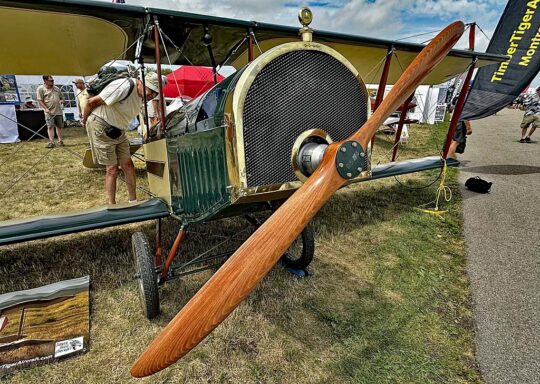 "Thousands of surplus Jennys were sold at bargain prices to private owners in the years after WWI and became central to the barnstorming era that helped awaken the U.S. to civil aviation through much of the 1920," according to Wikipedia. "It was the first airplane many people ever saw," said Timber Tiger Aircraft.
Owning an original would take a substantial investment, far out of most budgets. Yet Timber Tiger's updated and improved Jenny — one that faithfully reproduces an original in slightly smaller form, therefore requiring less engine — is far more affordable.
"Thousands of surplus Jennys were sold at bargain prices to private owners in the years after WWI and became central to the barnstorming era that helped awaken the U.S. to civil aviation through much of the 1920," according to Wikipedia. "It was the first airplane many people ever saw," said Timber Tiger Aircraft.
Owning an original would take a substantial investment, far out of most budgets. Yet Timber Tiger's updated and improved Jenny — one that faithfully reproduces an original in slightly smaller form, therefore requiring less engine — is far more affordable.
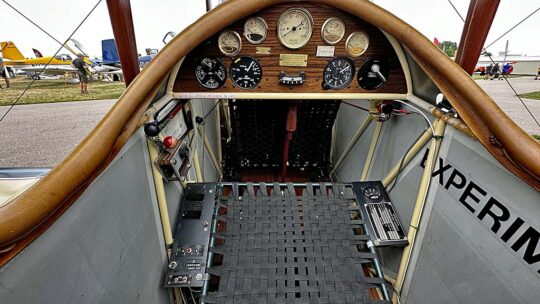 Early Bird Aircraft created their "Generation 1" Jenny at two-thirds scale. The "Generation 2" Jenny by Timber Tiger Aircraft is a three-quarters scale replica featuring "improved hardware, improved documentation, more accurate replica looks, more advanced kit preparation, and reinforcements in key areas," explained Nick.
A few years back, Timber Tiger made a splash with its entry of a 95%-scale Ryan ST, an iconic aircraft of that postwar golden age of aviation.
Early Bird Aircraft created their "Generation 1" Jenny at two-thirds scale. The "Generation 2" Jenny by Timber Tiger Aircraft is a three-quarters scale replica featuring "improved hardware, improved documentation, more accurate replica looks, more advanced kit preparation, and reinforcements in key areas," explained Nick.
A few years back, Timber Tiger made a splash with its entry of a 95%-scale Ryan ST, an iconic aircraft of that postwar golden age of aviation. 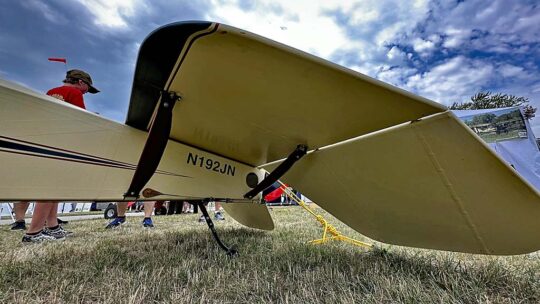 Jenny is offered in a variety of kits. Start with a basic kit (for experienced builders) for $6,900. A group of extra kits can be bought separately: quick-build wing kits, a snazzy louvered engine cowl kit, and several others. All that's lacking is an engine, prop, instruments (and perhaps an electrical system), tires and tubes, plus covering and paint.
Nick advises that for most buyers and certainly first-time builders, the complete kit involving some quick-build assemblies is the wisest choice that will ultimately save them money while greatly easing (and making more accurate) the build effort.
Jenny is offered in a variety of kits. Start with a basic kit (for experienced builders) for $6,900. A group of extra kits can be bought separately: quick-build wing kits, a snazzy louvered engine cowl kit, and several others. All that's lacking is an engine, prop, instruments (and perhaps an electrical system), tires and tubes, plus covering and paint.
Nick advises that for most buyers and certainly first-time builders, the complete kit involving some quick-build assemblies is the wisest choice that will ultimately save them money while greatly easing (and making more accurate) the build effort.
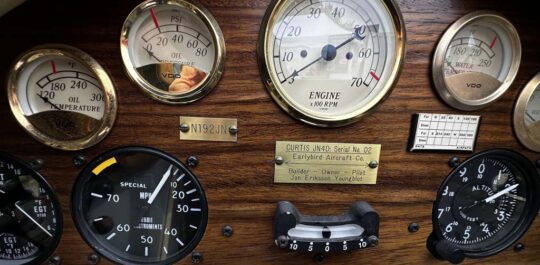 Here is another entry that qualifies as affordable (though that means something different for each person reading). "Estimated average cost to build to completion is $25,000 to $45,000," said Nick at AirVenture Oshkosh 2023. Here's how that breaks out.
Starting with a base kit for $6,900 plus engine — likely used/rebuilt — plus some hardware components supplied by the owner ("nothing particularly hard to obtain"), Nick indicated an experienced builder could get airborne for $25,000.
Here is another entry that qualifies as affordable (though that means something different for each person reading). "Estimated average cost to build to completion is $25,000 to $45,000," said Nick at AirVenture Oshkosh 2023. Here's how that breaks out.
Starting with a base kit for $6,900 plus engine — likely used/rebuilt — plus some hardware components supplied by the owner ("nothing particularly hard to obtain"), Nick indicated an experienced builder could get airborne for $25,000.
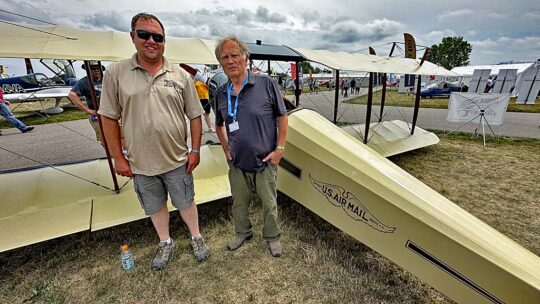
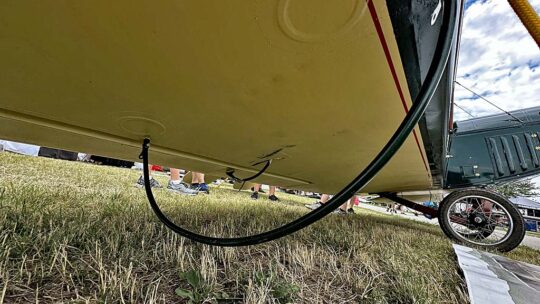
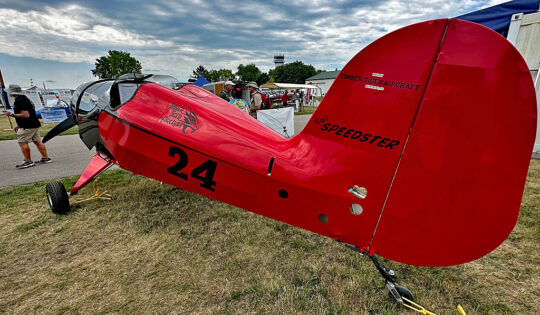
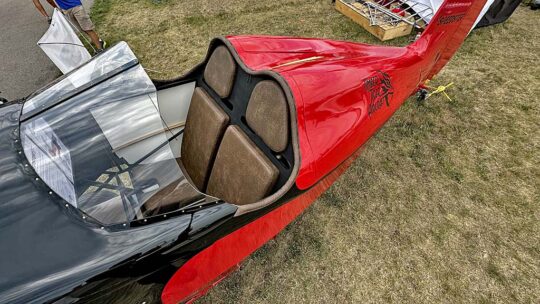

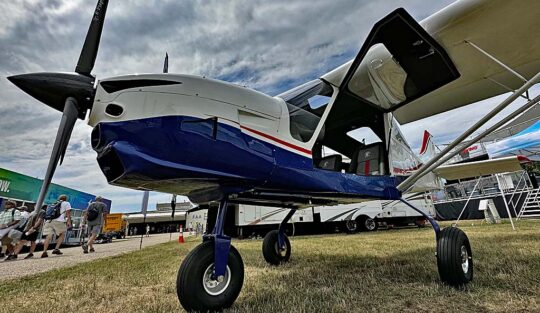 Where did American Aircraft come from and how does it relate to earlier aircraft associated with prolific Columbian aeronautical designer Max Tedesco (using his somewhat Americanized name)?
Where did American Aircraft come from and how does it relate to earlier aircraft associated with prolific Columbian aeronautical designer Max Tedesco (using his somewhat Americanized name)?
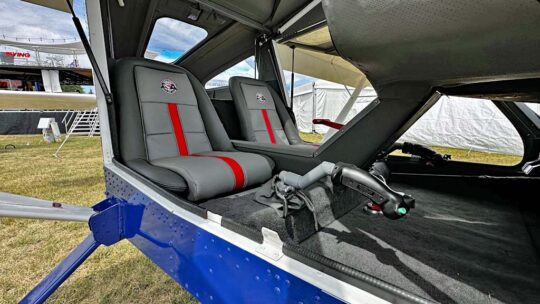
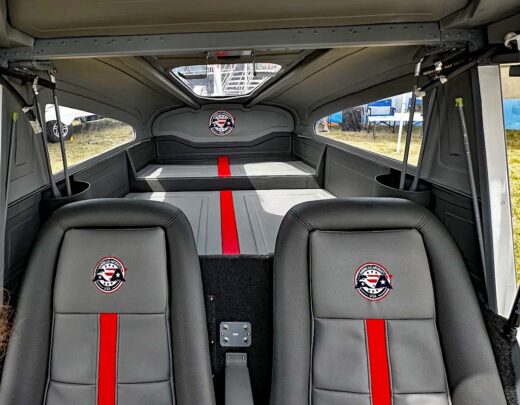 Now at AirVenture 2023, I spoke again with Danny Labovic who had worked with the man from Sila. Although he gave it a good effort, he said it proved impossible to work with the Sila developer and he ended the relationship.
In new and revised form, an aircraft somewhat similar to Sila 450 is now offered in America as Freedom. To a careful eye, this one is clearly a Max Tedesco design. Elements of the aircraft will be fabricated in Columbia but much of the work and final assembly is planned for the USA, according to American Aircraft. Max prefers designing to manufacturing.
Now at AirVenture 2023, I spoke again with Danny Labovic who had worked with the man from Sila. Although he gave it a good effort, he said it proved impossible to work with the Sila developer and he ended the relationship.
In new and revised form, an aircraft somewhat similar to Sila 450 is now offered in America as Freedom. To a careful eye, this one is clearly a Max Tedesco design. Elements of the aircraft will be fabricated in Columbia but much of the work and final assembly is planned for the USA, according to American Aircraft. Max prefers designing to manufacturing.
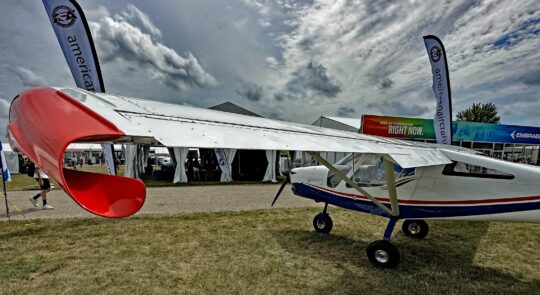
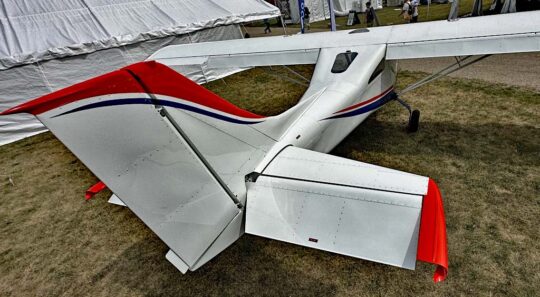 Like all Max Tedesco designs I have examined, Freedom is an all-metal construction, accented with chromoly steel in stressful locations along with limited use of composites. From my previous experience in his creations, I would expect slow stalls in the mid-30-knot range, spirited climb rates beyond 1,000 feet per minute, and quite cooperative handling. Max has been designing light aircraft for 50 years and he knows his trade based on my discoveries when flying earlier entries.
Look at the images with this article to see a very nicely finished interior with full panels covering all the structure. It features comfortable seats and a distinctive folding joystick with a simple clamping mechanism to secure it for after after you are seated and belted. The door also helps entry as it is quite wide (fore to aft). The instrument panel can accommodate the usual array of glass screens and radios.
Like all Max Tedesco designs I have examined, Freedom is an all-metal construction, accented with chromoly steel in stressful locations along with limited use of composites. From my previous experience in his creations, I would expect slow stalls in the mid-30-knot range, spirited climb rates beyond 1,000 feet per minute, and quite cooperative handling. Max has been designing light aircraft for 50 years and he knows his trade based on my discoveries when flying earlier entries.
Look at the images with this article to see a very nicely finished interior with full panels covering all the structure. It features comfortable seats and a distinctive folding joystick with a simple clamping mechanism to secure it for after after you are seated and belted. The door also helps entry as it is quite wide (fore to aft). The instrument panel can accommodate the usual array of glass screens and radios.
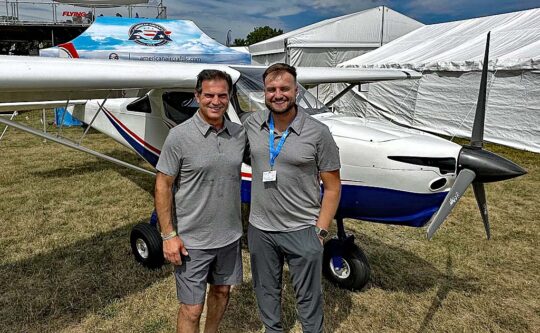
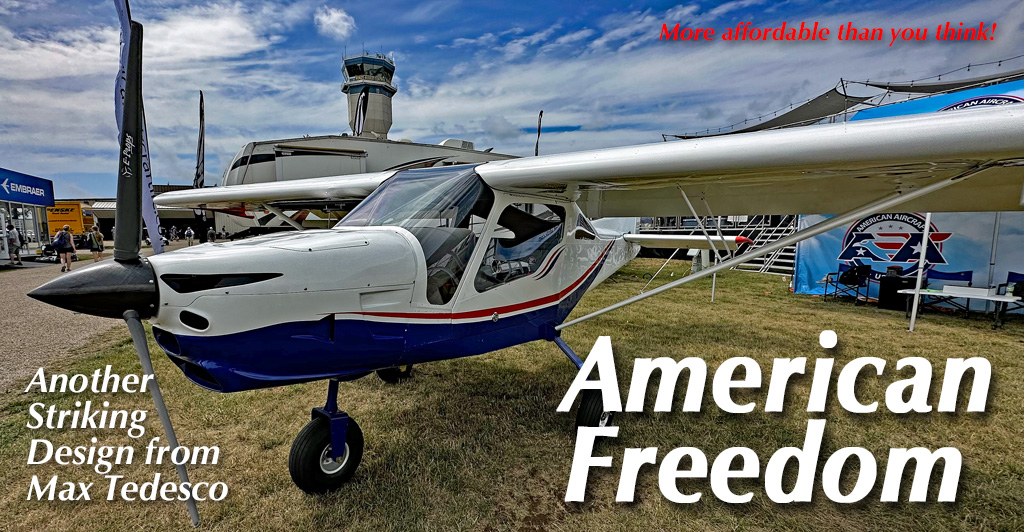
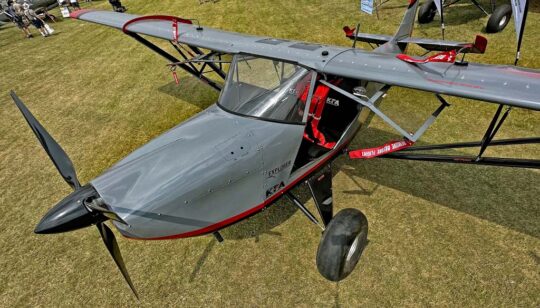 The bigger and more accurate picture is that KFA is yet another light aviation success story for South Africa
The bigger and more accurate picture is that KFA is yet another light aviation success story for South Africa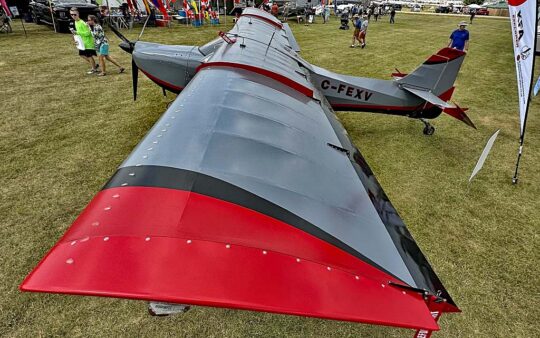 The gray-over-black Explorer looks familiar to Oshkosh attendees. I overheard more than one person say it "looks like a Kitfox." This comment is not original or accurate because even Kitfox started out as a modification of an Avid Flyer, the true original of this planform by designer Dean Wilson 40 years ago. Many other variations on the theme have been developed over the decades.
Stefan maintains that while similarities exist, Explorer is different in almost every element, "I don't believe any part on this airplane would work on a Kitfox," he said. Over several iterations — Bushbaby to Explorer to Safari to Safari XL — the design evolved like many do when engineers find a way to improve.
Safari XL has a particularly interesting story, one that I think many Americans will appreciate.
The gray-over-black Explorer looks familiar to Oshkosh attendees. I overheard more than one person say it "looks like a Kitfox." This comment is not original or accurate because even Kitfox started out as a modification of an Avid Flyer, the true original of this planform by designer Dean Wilson 40 years ago. Many other variations on the theme have been developed over the decades.
Stefan maintains that while similarities exist, Explorer is different in almost every element, "I don't believe any part on this airplane would work on a Kitfox," he said. Over several iterations — Bushbaby to Explorer to Safari to Safari XL — the design evolved like many do when engineers find a way to improve.
Safari XL has a particularly interesting story, one that I think many Americans will appreciate.
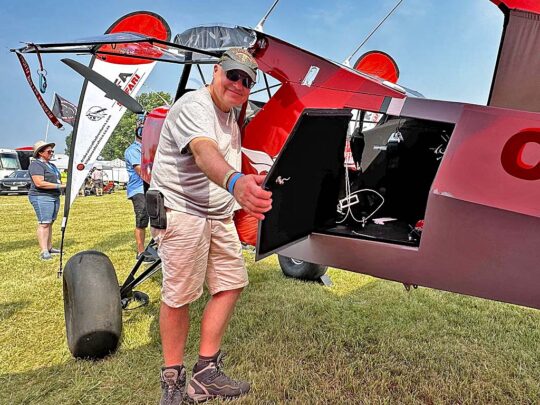
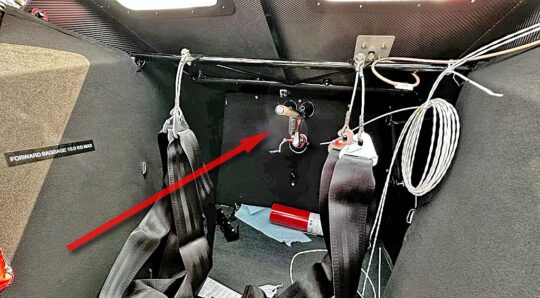
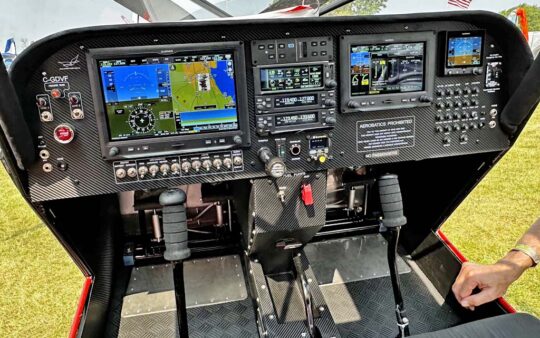 Even though Safari XL must be Experimental Amateur Built, KFA is happy to support different skill sets with a variety of kit packages. Beside the basic kit that may consume 700 hours, the company offers at least two levels that are commonly called quick-build kits.
Stefan's humorous reference to "Hamburgers" brings home the fact that even if you and your best flying buddy may not be large fellows or gals, extra space inside is almost always appreciated (except maybe by the go-as-fast-as-possible crowd). If you are built large, this airplane will fit. Six-eight Vince looked comfortable when I asked him to model his plane for me.
Even though Safari XL must be Experimental Amateur Built, KFA is happy to support different skill sets with a variety of kit packages. Beside the basic kit that may consume 700 hours, the company offers at least two levels that are commonly called quick-build kits.
Stefan's humorous reference to "Hamburgers" brings home the fact that even if you and your best flying buddy may not be large fellows or gals, extra space inside is almost always appreciated (except maybe by the go-as-fast-as-possible crowd). If you are built large, this airplane will fit. Six-eight Vince looked comfortable when I asked him to model his plane for me.
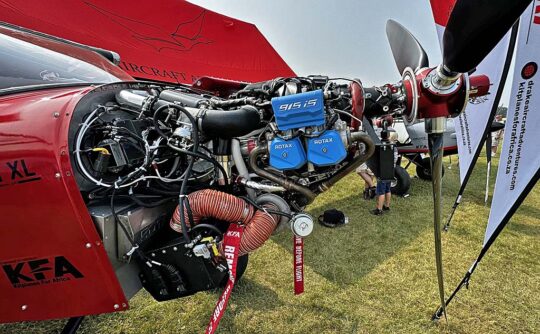
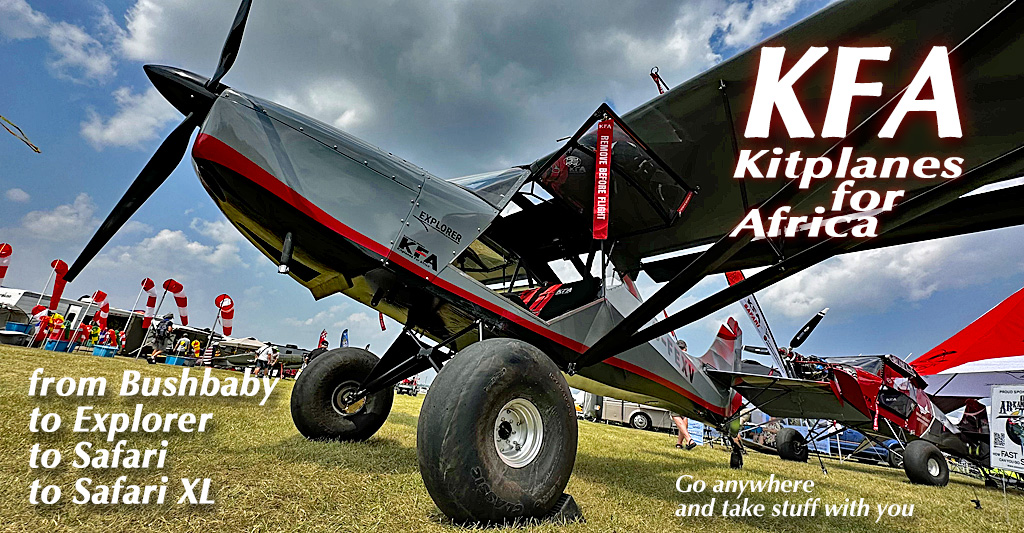
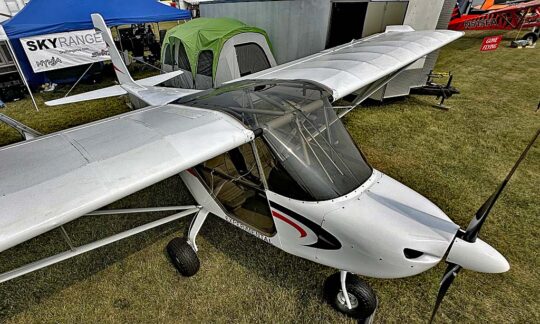 Part 103 has always been a choice — no medical, N-numbers, or pilot certificate needed — yet not everybody wants that. A great many pilots desire a two seater, even if they nearly always fly it solo. You usually pay more for a two seater, making it less likely to be affordable.
One modestly-priced two seater is available, fortunately.
Part 103 has always been a choice — no medical, N-numbers, or pilot certificate needed — yet not everybody wants that. A great many pilots desire a two seater, even if they nearly always fly it solo. You usually pay more for a two seater, making it less likely to be affordable.
One modestly-priced two seater is available, fortunately.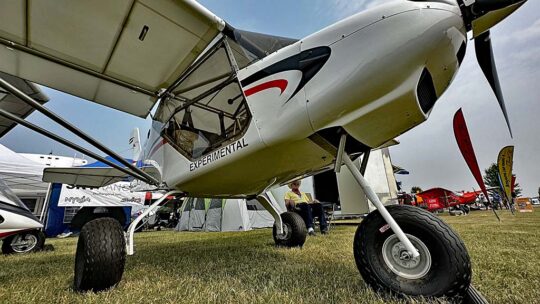 Does "complete" mean a full parts kit? Yes, including wing coverings but everything else you need as well: 80-horsepower Rotax 912 (more than enough; I thought one flew well even with a 582), Kiev 3-blade prop, custom exhaust system, carb heat, Kanardia instruments, and engine instruments.
You won't have to paint this one as it uses a sewn Dacron laminate fabric that is tough, light, and needs no paint, saving a bundle plus hours of work.
Build time is estimated at 300 hours and it looks to be quite a straightforward job of assembly. No fabrication is needed and only simple hand tools are used.
Does "complete" mean a full parts kit? Yes, including wing coverings but everything else you need as well: 80-horsepower Rotax 912 (more than enough; I thought one flew well even with a 582), Kiev 3-blade prop, custom exhaust system, carb heat, Kanardia instruments, and engine instruments.
You won't have to paint this one as it uses a sewn Dacron laminate fabric that is tough, light, and needs no paint, saving a bundle plus hours of work.
Build time is estimated at 300 hours and it looks to be quite a straightforward job of assembly. No fabrication is needed and only simple hand tools are used.
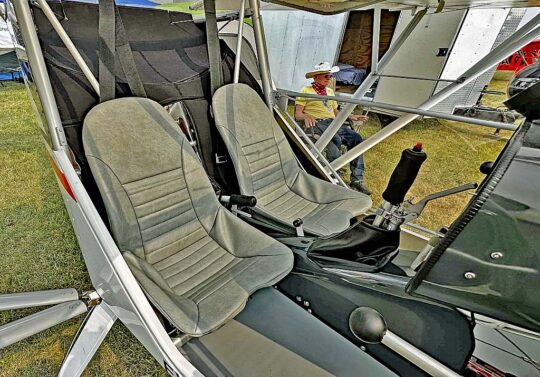 If you prefer a smoother fuselage, the Nynja model is available for $10,000 more ($59,985, still quite a value in 2023).The extra funds buy a composite fuselage exterior plus a 100-horse 912.
If you agree this is a bargain at a time when the price of everything you buy has gone up 50 to 100% or more in the last three years, then you might wonder, "OK, but is this thing any good?"
Here's two comments that put that inquiry in perspective: SkyRanger is reportedly Britain's best-selling fixed-wing microlight and is a five-time FAI World Champion. Designed by Frenchman Phillippe Prevot under the brand BestOff, SkyRanger emerged in 1991, so it's got track record, too, proven further still by 1,600 flying examples.
If you prefer a smoother fuselage, the Nynja model is available for $10,000 more ($59,985, still quite a value in 2023).The extra funds buy a composite fuselage exterior plus a 100-horse 912.
If you agree this is a bargain at a time when the price of everything you buy has gone up 50 to 100% or more in the last three years, then you might wonder, "OK, but is this thing any good?"
Here's two comments that put that inquiry in perspective: SkyRanger is reportedly Britain's best-selling fixed-wing microlight and is a five-time FAI World Champion. Designed by Frenchman Phillippe Prevot under the brand BestOff, SkyRanger emerged in 1991, so it's got track record, too, proven further still by 1,600 flying examples.
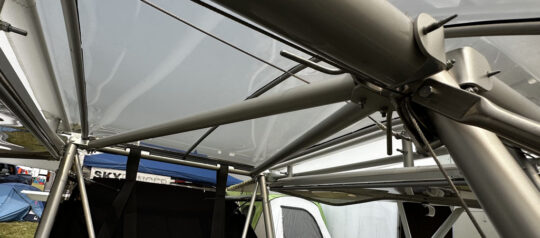 Construction features include: Pin-jointed tubular construction; no welded structure; only straight tubes are used (except wing ribs), which aids assembly; airframe uses aircraft grade 2024 aluminum tubing. Other parts are made from steel and stainless steel.
"The undercarriage is particularly strong," reported FlyLight. "SkyRanger [was expressly] designed for ‘off the beaten path’ operation."
Construction features include: Pin-jointed tubular construction; no welded structure; only straight tubes are used (except wing ribs), which aids assembly; airframe uses aircraft grade 2024 aluminum tubing. Other parts are made from steel and stainless steel.
"The undercarriage is particularly strong," reported FlyLight. "SkyRanger [was expressly] designed for ‘off the beaten path’ operation."
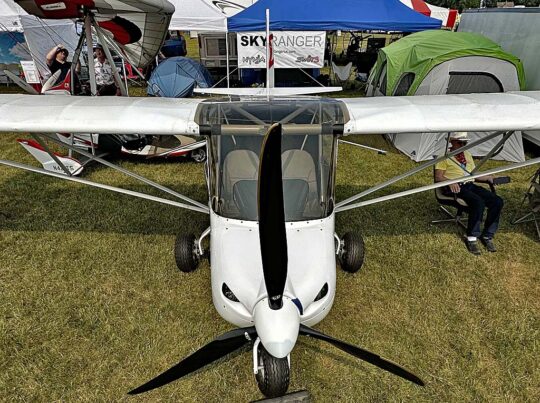 Since 2017, Britain’s
Since 2017, Britain’s 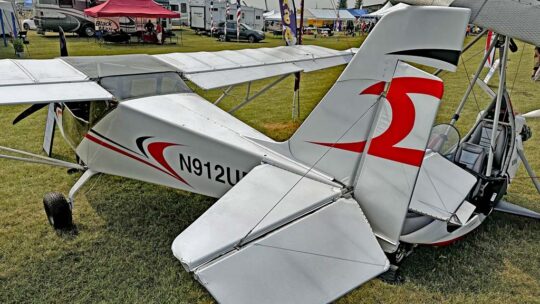 For those that want ultimate STOL, the original long wing is also available on request.
"Swift 3 also has available an LS version which has a 600 kilogram (1,320 pound) maximum takeoff weight. With empty weight under 270 kilograms (595 pounds), the LS version has an astonishing payload of 330 kilograms (725 pounds)… 1.2 X its empty weight!"
After almost 20 years of LSA development adding features that pilots have requested, and after absorbing the mass from these options, empty weight for most LSA has crept up steadily, making SkyRanger's useful load unusually large.
SkyRanger has been my focus here because it offers a lower price point. However, Nynja is worth your interest if the extra 10 grand is not too much for your budget. It has a composite exterior and the shortened wing of the earlier Swift model so it has a higher cruise (and a somewhat higher stall, of course).
For $50K plus 300 hours of your labor you could have a world champion that has proven itself since before we had Light-Sport Aircraft. Learn more at
For those that want ultimate STOL, the original long wing is also available on request.
"Swift 3 also has available an LS version which has a 600 kilogram (1,320 pound) maximum takeoff weight. With empty weight under 270 kilograms (595 pounds), the LS version has an astonishing payload of 330 kilograms (725 pounds)… 1.2 X its empty weight!"
After almost 20 years of LSA development adding features that pilots have requested, and after absorbing the mass from these options, empty weight for most LSA has crept up steadily, making SkyRanger's useful load unusually large.
SkyRanger has been my focus here because it offers a lower price point. However, Nynja is worth your interest if the extra 10 grand is not too much for your budget. It has a composite exterior and the shortened wing of the earlier Swift model so it has a higher cruise (and a somewhat higher stall, of course).
For $50K plus 300 hours of your labor you could have a world champion that has proven itself since before we had Light-Sport Aircraft. Learn more at 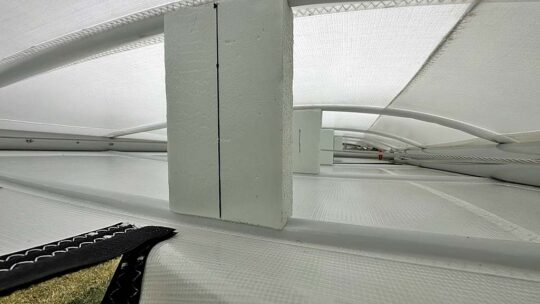
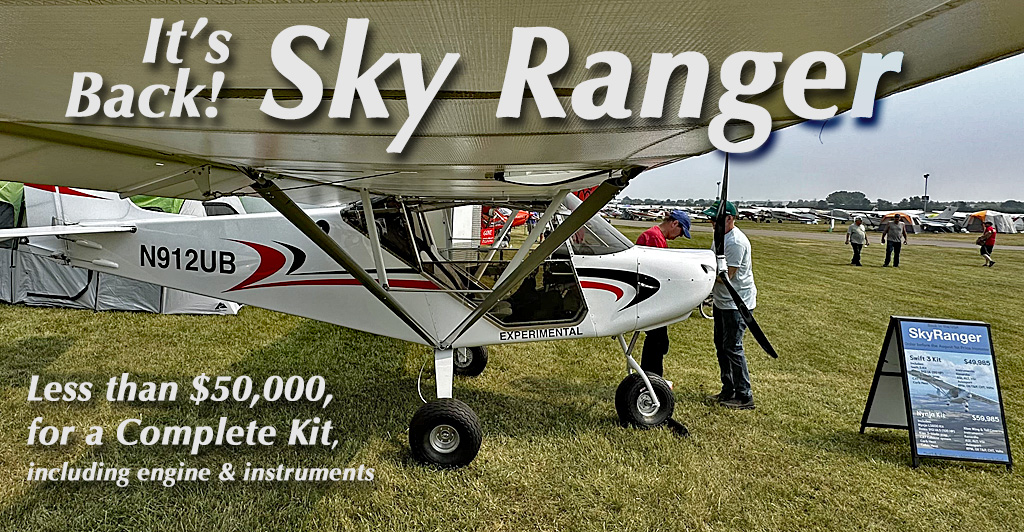
 The night before opening, with literally hours before the show starts, the place appears in a state of chaos. Pandemonium reigns. Vehicles, crates, equipment of every kind is seemingly strewn about as if by a storm (which did do some damage on Saturday night, ironically most affecting those who started earlier).
Every show I think, "No way can they get this or that exhibit ready in the 10-15 hours before the main gates open to hundreds of thousands of visitors."
The night before opening, with literally hours before the show starts, the place appears in a state of chaos. Pandemonium reigns. Vehicles, crates, equipment of every kind is seemingly strewn about as if by a storm (which did do some damage on Saturday night, ironically most affecting those who started earlier).
Every show I think, "No way can they get this or that exhibit ready in the 10-15 hours before the main gates open to hundreds of thousands of visitors."

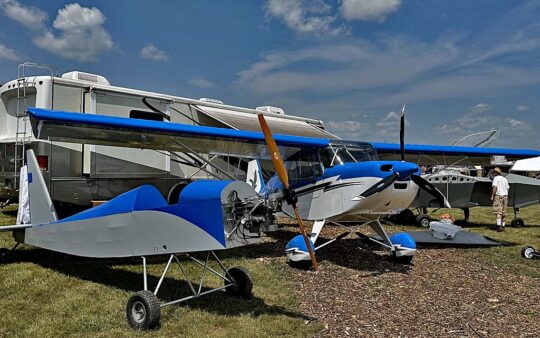
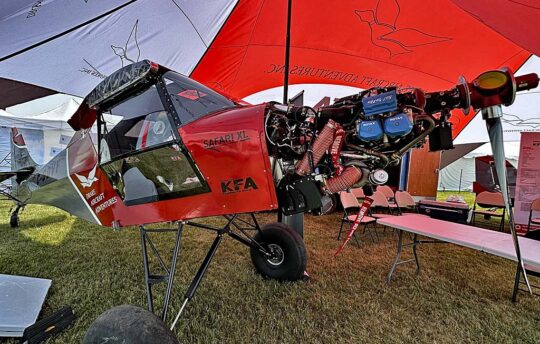
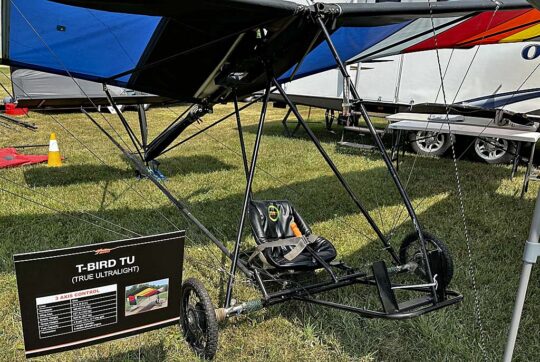
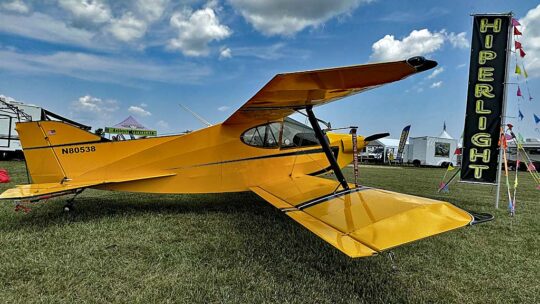
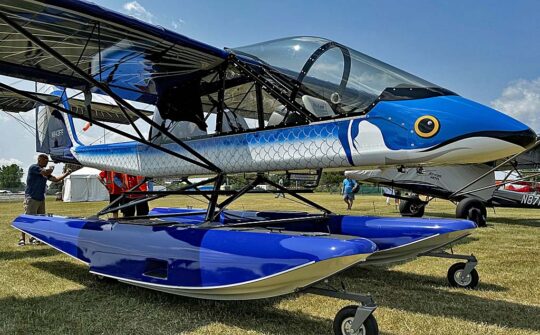 I close out this tour of set-up day at AirVenture Oshkosh 2023 with a look at an AirCam.
First, here's a fascinating thought related to Mosaic. Some who read FAA's 318-page proposal noticed that no ban appears for multiple engines. In fact, electric concepts often rely on multiple motors and they are included in Mosaic. So, could AirCam become a Mosaic LSA? Hmmm… maybe.
Such a step is a big one and the company has not announced any such plans. Of course, the NPRM just came out as all suppliers were working hard to prepare for Oshkosh. Nonetheless, I plan to ask Ian or Phil Lockwood about this possibility and if they concur, I'll inquire if they may take steps in that direction.
I close out this tour of set-up day at AirVenture Oshkosh 2023 with a look at an AirCam.
First, here's a fascinating thought related to Mosaic. Some who read FAA's 318-page proposal noticed that no ban appears for multiple engines. In fact, electric concepts often rely on multiple motors and they are included in Mosaic. So, could AirCam become a Mosaic LSA? Hmmm… maybe.
Such a step is a big one and the company has not announced any such plans. Of course, the NPRM just came out as all suppliers were working hard to prepare for Oshkosh. Nonetheless, I plan to ask Ian or Phil Lockwood about this possibility and if they concur, I'll inquire if they may take steps in that direction.

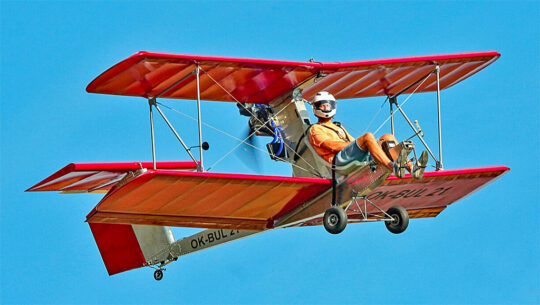 Tom Peghiny of Flight Design USA fame, wrote, "Jan Jilek is one of the design engineers of Future Vehicles as well as their test pilot. He is also a talented aerobatic performer. We flew together in a few planes while I was working in Sumperk, CZ [as a consultant to Flight Design]."
Dingo was created by Marek Ivanov. At the beginning of 2021, he showed the first 3D images to the Future Vehicles team. This is an experienced group that does a wide range of engineering work for a variety of aircraft producers.
Tom Peghiny of Flight Design USA fame, wrote, "Jan Jilek is one of the design engineers of Future Vehicles as well as their test pilot. He is also a talented aerobatic performer. We flew together in a few planes while I was working in Sumperk, CZ [as a consultant to Flight Design]."
Dingo was created by Marek Ivanov. At the beginning of 2021, he showed the first 3D images to the Future Vehicles team. This is an experienced group that does a wide range of engineering work for a variety of aircraft producers.
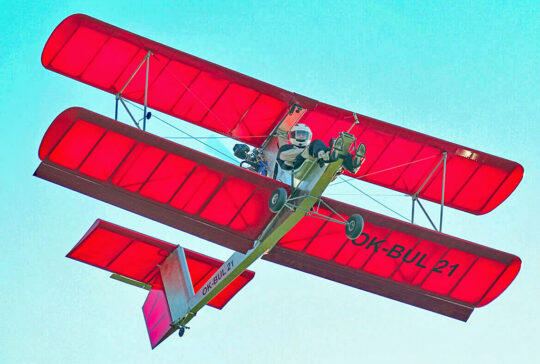 Dingo's main landing gear is welded from thin-walled steel tubes and bolts to the fuselage. Tail gear is steerable and straightened by spring. Ailerons and elevator are connected to the stick by push-pull rods, and the rudder is connected to welded pedals by cables.
Dingo made its maiden flight on June 22, 2022 at the Jaroměř (LKJA airport) only a year and a half after the team pondered the 3D drawings.
Dingo's main landing gear is welded from thin-walled steel tubes and bolts to the fuselage. Tail gear is steerable and straightened by spring. Ailerons and elevator are connected to the stick by push-pull rods, and the rudder is connected to welded pedals by cables.
Dingo made its maiden flight on June 22, 2022 at the Jaroměř (LKJA airport) only a year and a half after the team pondered the 3D drawings.
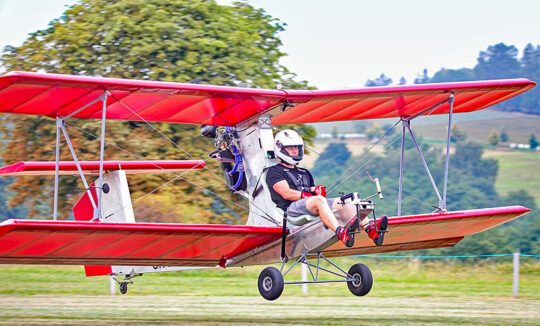 Dingo is a single-seat open cockpit biplane, powerplant in pusher configuration, a classic taildragger with a T-tail empennage. It was designed with a focus on easy and quick assembly. That promise is aided by using match-hole technology that assures a homebuilder without fancy jigs can accurately assemble Dingo subassemblies. This is now widely used in LSA but it is far less common on Part 103 entries.
Based in Hradec Králové, Czech Republic, Future Vehicles announced that the Dingo has passed several key milestones, and is now in full production.
Dingo is a single-seat open cockpit biplane, powerplant in pusher configuration, a classic taildragger with a T-tail empennage. It was designed with a focus on easy and quick assembly. That promise is aided by using match-hole technology that assures a homebuilder without fancy jigs can accurately assemble Dingo subassemblies. This is now widely used in LSA but it is far less common on Part 103 entries.
Based in Hradec Králové, Czech Republic, Future Vehicles announced that the Dingo has passed several key milestones, and is now in full production.
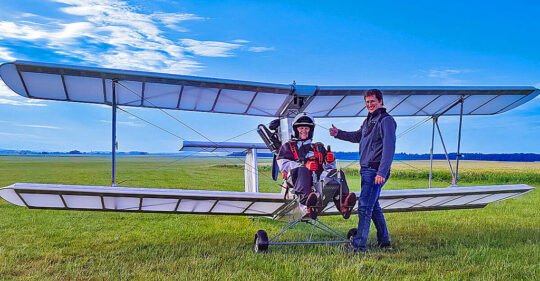
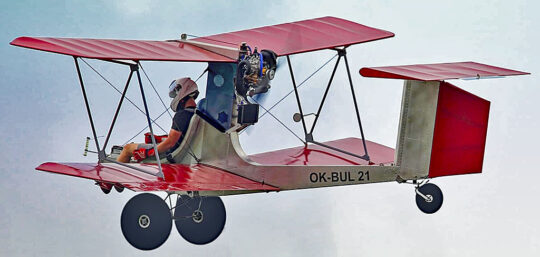
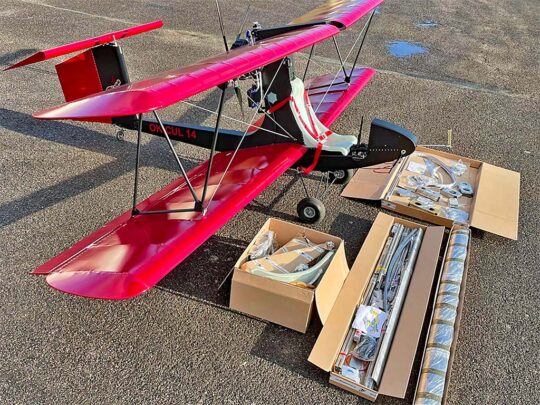 "The detailed assembly directions include both a PDF manual with excellent CAD drawings and parts lists of each assembly and companion videos of how each assembly is built," noted Future Vehicles.
The recommended covering is Ceconite polyester fabric. One current builder in the UK is using Oratex which does not even require painting. View a sample tutorial video of the assembly directions at the bottom of this page.
The exciting and easy-to-build aircraft is now available worldwide through an innovative, factory-direct business model (think: Tesla) that reduces delivery times. Currently Future Vehicles can ship in one month. Going factory direct ensures door-to-door delivery.
"The detailed assembly directions include both a PDF manual with excellent CAD drawings and parts lists of each assembly and companion videos of how each assembly is built," noted Future Vehicles.
The recommended covering is Ceconite polyester fabric. One current builder in the UK is using Oratex which does not even require painting. View a sample tutorial video of the assembly directions at the bottom of this page.
The exciting and easy-to-build aircraft is now available worldwide through an innovative, factory-direct business model (think: Tesla) that reduces delivery times. Currently Future Vehicles can ship in one month. Going factory direct ensures door-to-door delivery.
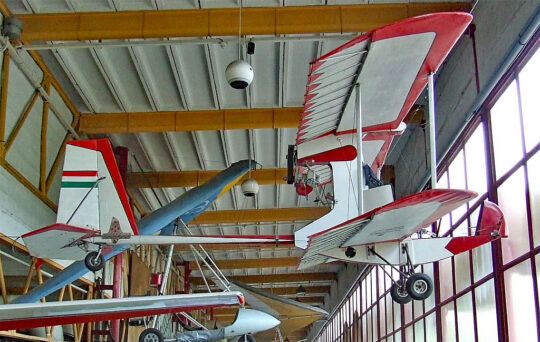
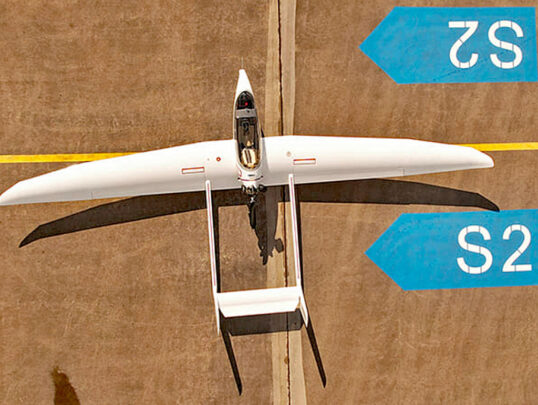
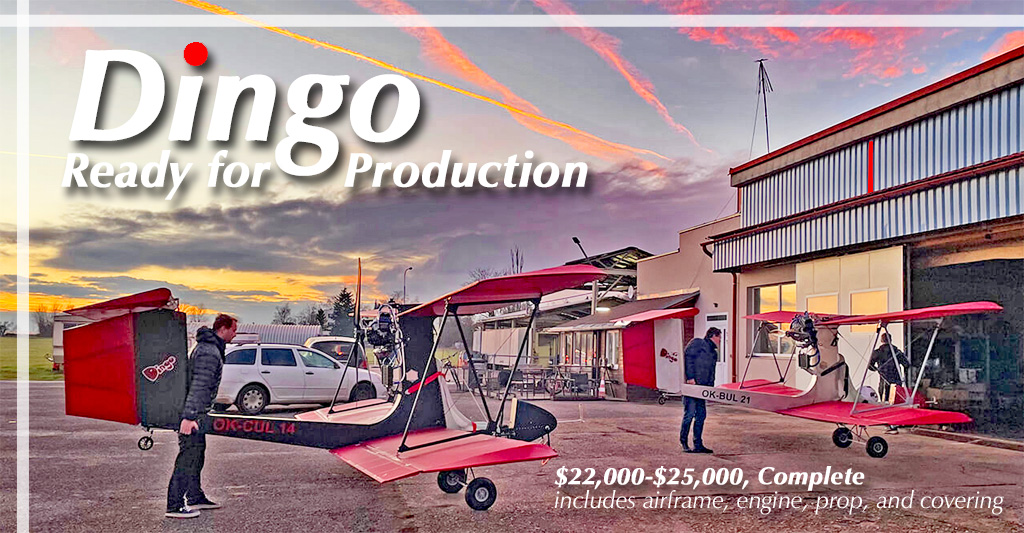
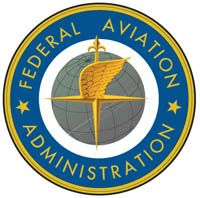 Consider the following communication from the ASTM committee working on LSA standards. In case you don't know what that is,
Consider the following communication from the ASTM committee working on LSA standards. In case you don't know what that is, 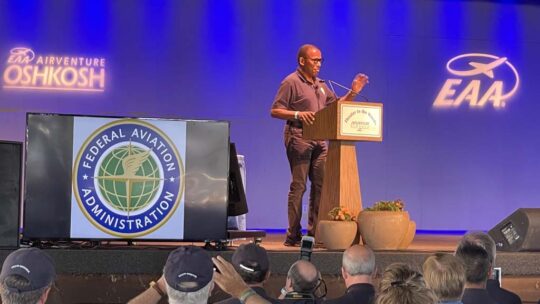
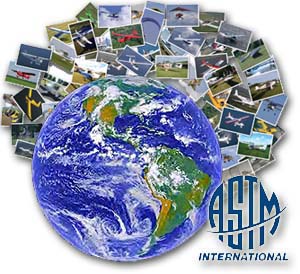 Leaders encouraged F37 committee members (more than 200 persons around the world), "Once the NPRM is posted (see below!), if you have available time, please try to review as much as you can and capture your questions/comments for group discussion next week [at AirVenture 2023 meetings]. These are generally pretty lengthy documents. We'll all be freshly digesting the NPRM, so everyone's perspectives and interpretations will be important to help bring clarity as quickly as possible."
Leaders encouraged F37 committee members (more than 200 persons around the world), "Once the NPRM is posted (see below!), if you have available time, please try to review as much as you can and capture your questions/comments for group discussion next week [at AirVenture 2023 meetings]. These are generally pretty lengthy documents. We'll all be freshly digesting the NPRM, so everyone's perspectives and interpretations will be important to help bring clarity as quickly as possible."
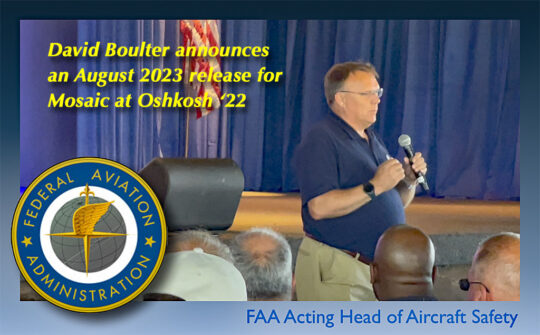 From FAA's official lead…
"I wanted to let you know that the Office of the Federal Register is scheduled to:
From FAA's official lead…
"I wanted to let you know that the Office of the Federal Register is scheduled to:
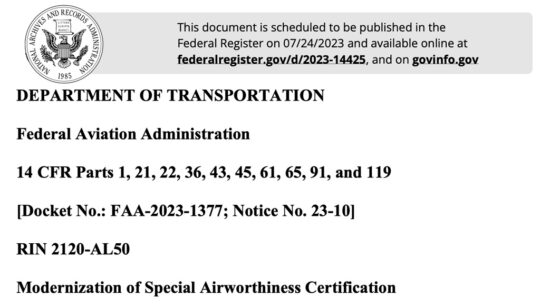
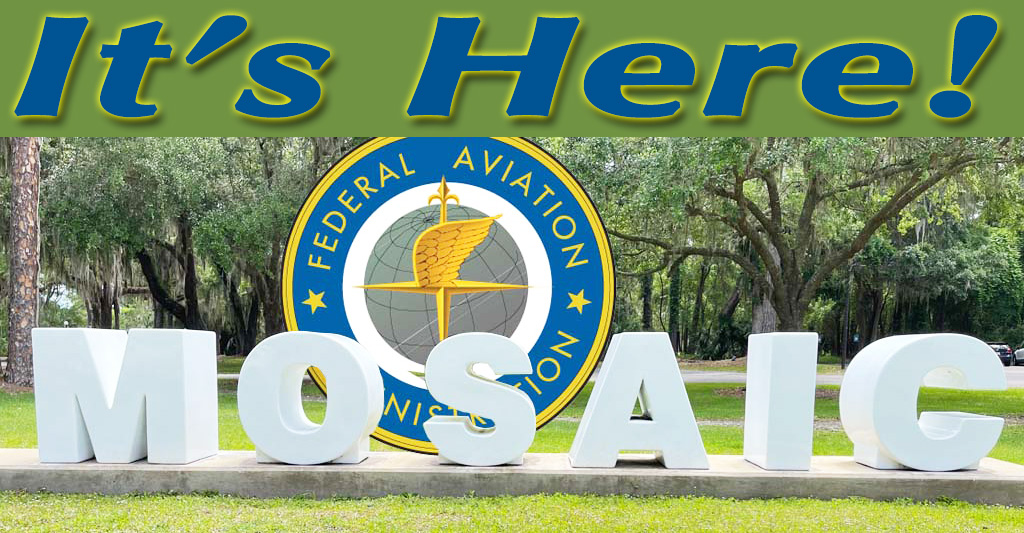
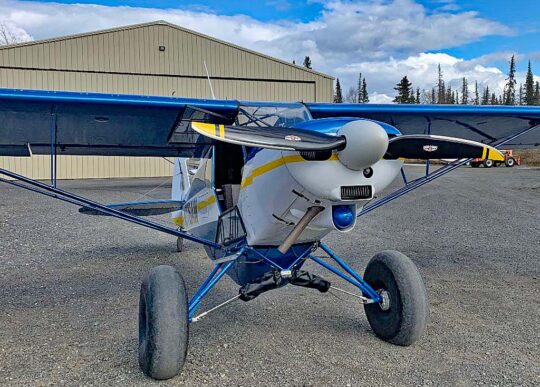 The STC is currently available and shipment of pre-order propellers has begun.
Extensive testing was performed during the certification project in both Alaska and Texas. The results were good.
Reduced weight, increased responsiveness, and increased operational flexibility are clear benefits of this high-performance propeller. In addition, this propeller’s innovative pitch adjustment feature and stainless steel protection give the customer maximum performance in multiple harsh and dynamic operating conditions. Pilots on supercub.org have been raving about the propeller's performance on their aircraft.
The STC is currently available and shipment of pre-order propellers has begun.
Extensive testing was performed during the certification project in both Alaska and Texas. The results were good.
Reduced weight, increased responsiveness, and increased operational flexibility are clear benefits of this high-performance propeller. In addition, this propeller’s innovative pitch adjustment feature and stainless steel protection give the customer maximum performance in multiple harsh and dynamic operating conditions. Pilots on supercub.org have been raving about the propeller's performance on their aircraft.
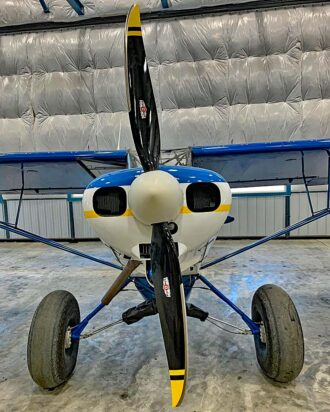 Sensenich seems determined to be on the nose of every airplane they can identify — and on the aft of dozens more. The company offers props for all manner of aircraft plus does a large business with airboats that are used all over Florida.
The southern company said they have other projects in the works for FAA approval on carbon ground-adjustable propeller STCs for Lycoming O-320 powered Cessna 172 aircraft along with type certification for 65 to 140 horsepower Continental and Lycoming four-cylinder engines. These propellers will offer the same performance and weight reduction benefits to those aircraft and engines.
Sensenich seems determined to be on the nose of every airplane they can identify — and on the aft of dozens more. The company offers props for all manner of aircraft plus does a large business with airboats that are used all over Florida.
The southern company said they have other projects in the works for FAA approval on carbon ground-adjustable propeller STCs for Lycoming O-320 powered Cessna 172 aircraft along with type certification for 65 to 140 horsepower Continental and Lycoming four-cylinder engines. These propellers will offer the same performance and weight reduction benefits to those aircraft and engines.

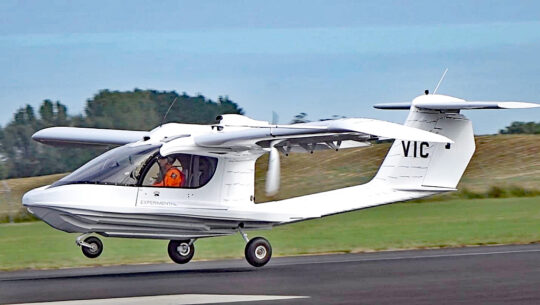 That was unfortunate but unavoidable. The show must go on (and be reported). I'm always amazed at how many aircraft make first flights or other notable events just as some show is opening.
As
That was unfortunate but unavoidable. The show must go on (and be reported). I'm always amazed at how many aircraft make first flights or other notable events just as some show is opening.
As 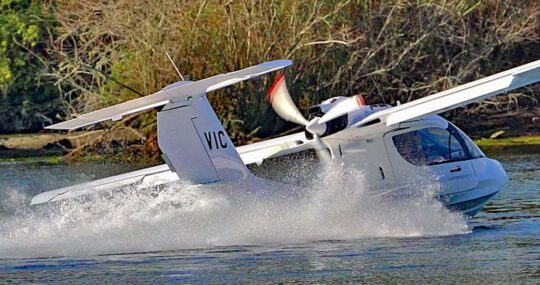 Land-based aircraft don't require such testing, which relates to
Land-based aircraft don't require such testing, which relates to 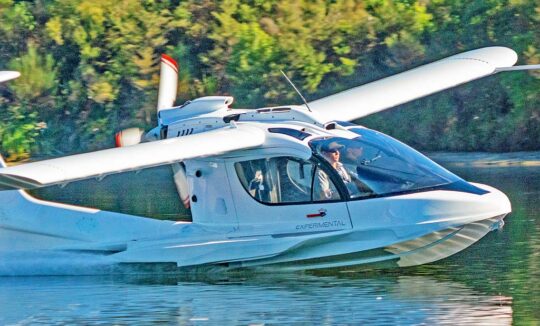
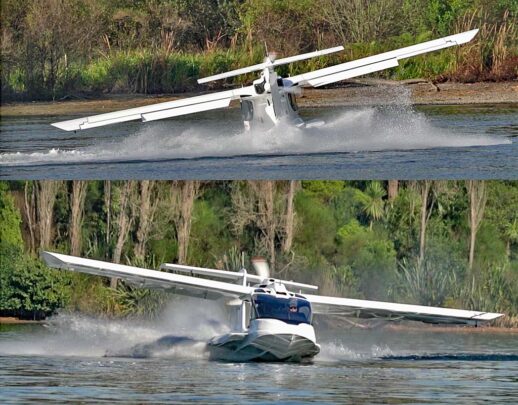
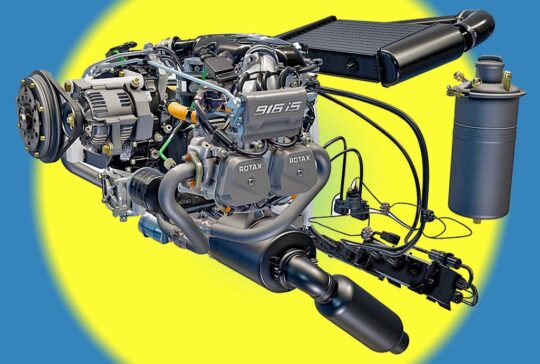 Fitting the new engine, completing all water-based testing, and preparing for ASTM's lengthy flight test requirements will keep Team Vickers close to their shop for the next few months.
"We will not be attending Oshkosh this year (2023) as we have a particular path to market that we will begin to unveil in 2024." Paul explained this comment, "We have watched and learned from other aircraft (and automotive) manufacturers over the past 10 years and clearly see the mistakes, and promises, that were made and missed. We will be applying the same thought process and discipline to our pending rollout as we have done to the entire project to date. There is no point in having an aircraft without a manufacturing company to support it, so we did both in parallel. Likewise, there is no point embarking on expensive marketing and airshow displays until we have a product to deliver and demonstrate."
Fitting the new engine, completing all water-based testing, and preparing for ASTM's lengthy flight test requirements will keep Team Vickers close to their shop for the next few months.
"We will not be attending Oshkosh this year (2023) as we have a particular path to market that we will begin to unveil in 2024." Paul explained this comment, "We have watched and learned from other aircraft (and automotive) manufacturers over the past 10 years and clearly see the mistakes, and promises, that were made and missed. We will be applying the same thought process and discipline to our pending rollout as we have done to the entire project to date. There is no point in having an aircraft without a manufacturing company to support it, so we did both in parallel. Likewise, there is no point embarking on expensive marketing and airshow displays until we have a product to deliver and demonstrate."
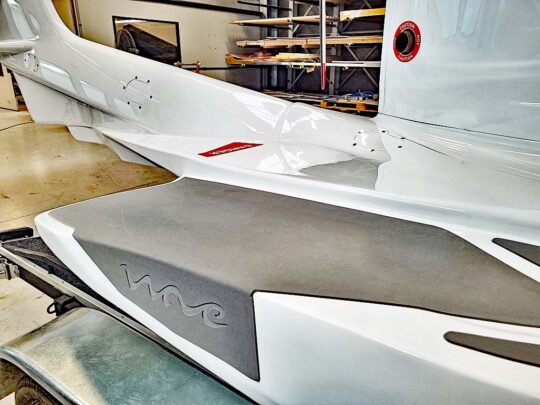 Who would argue these points? Yet it takes patience — and money — to go at a deliberate pace.
To appease those anxious to get in line for a Wave, Paul noted, "We are releasing a few early delivery positions at each milestone so we can confidently begin to scale and ramp year one and two production with confidence, allowing us to secure engines, carbon fiber, and avionics. If you want to get the early list,
Who would argue these points? Yet it takes patience — and money — to go at a deliberate pace.
To appease those anxious to get in line for a Wave, Paul noted, "We are releasing a few early delivery positions at each milestone so we can confidently begin to scale and ramp year one and two production with confidence, allowing us to secure engines, carbon fiber, and avionics. If you want to get the early list, 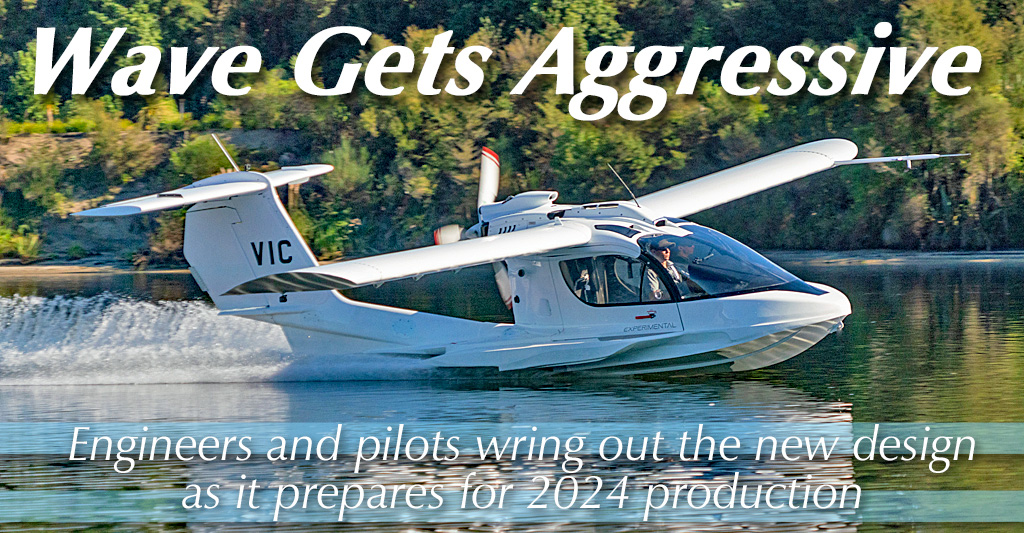
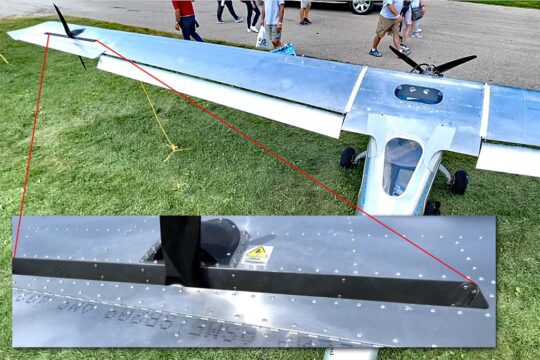 As the mainstream media hyperfocuses on multicopter air taxi ideas consuming vast amounts of money (why media pays attention in the first place), people like Chip have different thoughts about using electric power on aircraft. Depod is one of those concepts.
Depod is not intended for
As the mainstream media hyperfocuses on multicopter air taxi ideas consuming vast amounts of money (why media pays attention in the first place), people like Chip have different thoughts about using electric power on aircraft. Depod is one of those concepts.
Depod is not intended for 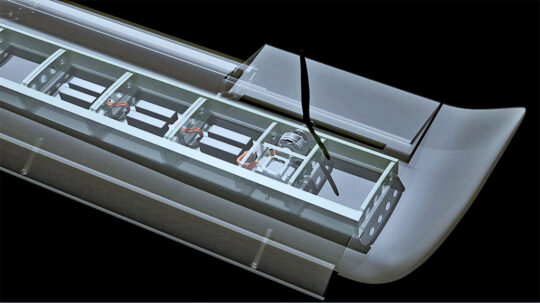 Indeed, Chip's term sounds made-for-military. DEPOD is awkward but does describe the idea.
NASA likes distributed electric propulsion (DEP), spending millions. Chip added the "on demand" part, spending thousands. His appears to be a clever, effective, and simpler way to use electric propulsion on an aircraft.
Let's learn what Chip has to say about the development.
Indeed, Chip's term sounds made-for-military. DEPOD is awkward but does describe the idea.
NASA likes distributed electric propulsion (DEP), spending millions. Chip added the "on demand" part, spending thousands. His appears to be a clever, effective, and simpler way to use electric propulsion on an aircraft.
Let's learn what Chip has to say about the development.
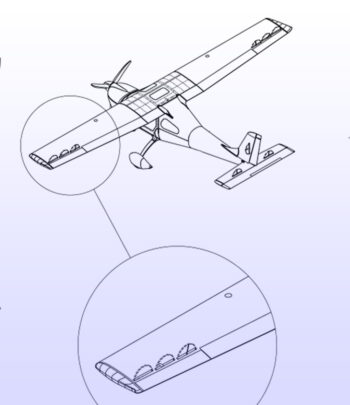 "Now covered by two U.S. patents (see at bottom) this new on-demand propulsion system gives the pilot instant added thrust for takeoff or for a go-around, and instant reverse thrust to allow shorter landing rolls," explain Chip.. "It helps achieve extreme short takeoff and landing performance in three ways, and it provides added aircraft 'envelope protection'."
Chip continued…
"Now covered by two U.S. patents (see at bottom) this new on-demand propulsion system gives the pilot instant added thrust for takeoff or for a go-around, and instant reverse thrust to allow shorter landing rolls," explain Chip.. "It helps achieve extreme short takeoff and landing performance in three ways, and it provides added aircraft 'envelope protection'."
Chip continued…
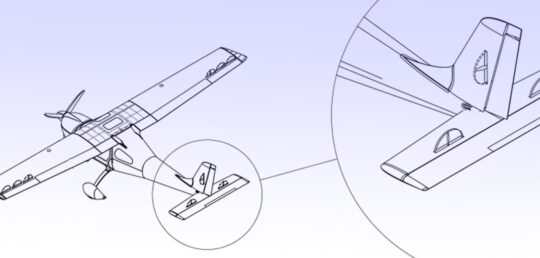
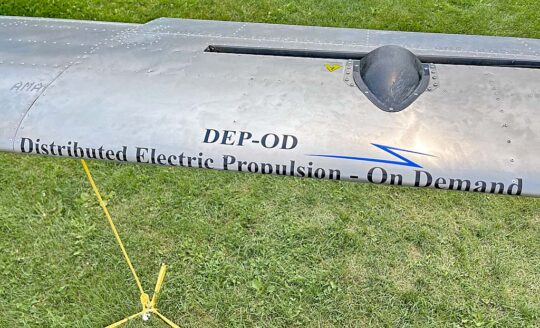 These small wing motors, used briefly to enhance a phase of flight, need only a battery you can hold in your hand because they are not primary thrust power (though they add a good measure to the total).
Accelerating airflow over ailerons is very helpful to slow speed flight but it is not a new theory. You may have seen photos of a modified Tecnam Twin with multiple small electric motors lined up all along the leading edge. NASA calls this "distributed lift" and at its base, this and Depod are not so different.
These small wing motors, used briefly to enhance a phase of flight, need only a battery you can hold in your hand because they are not primary thrust power (though they add a good measure to the total).
Accelerating airflow over ailerons is very helpful to slow speed flight but it is not a new theory. You may have seen photos of a modified Tecnam Twin with multiple small electric motors lined up all along the leading edge. NASA calls this "distributed lift" and at its base, this and Depod are not so different.
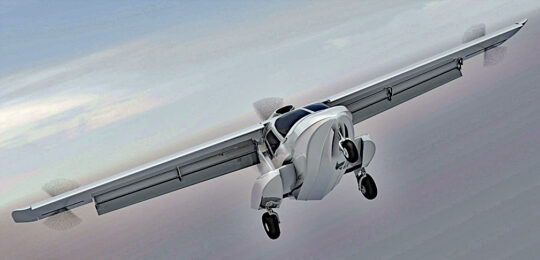 By pushing air across the aileron, a Merlin Lite with these small motors buried in the wings could maintain control down to nearly zero airspeed. The small wing-mounted motor also helps generate more lift, making for very short takeoffs. “It could cut takeoff roll by three times,” Chip suggested.
By pushing air across the aileron, a Merlin Lite with these small motors buried in the wings could maintain control down to nearly zero airspeed. The small wing-mounted motor also helps generate more lift, making for very short takeoffs. “It could cut takeoff roll by three times,” Chip suggested.
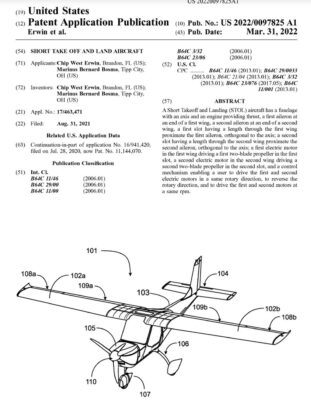
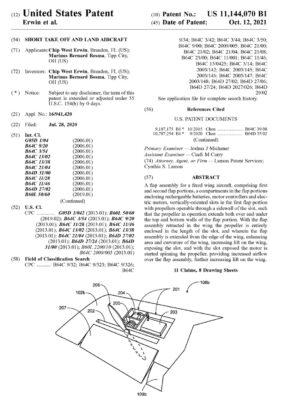
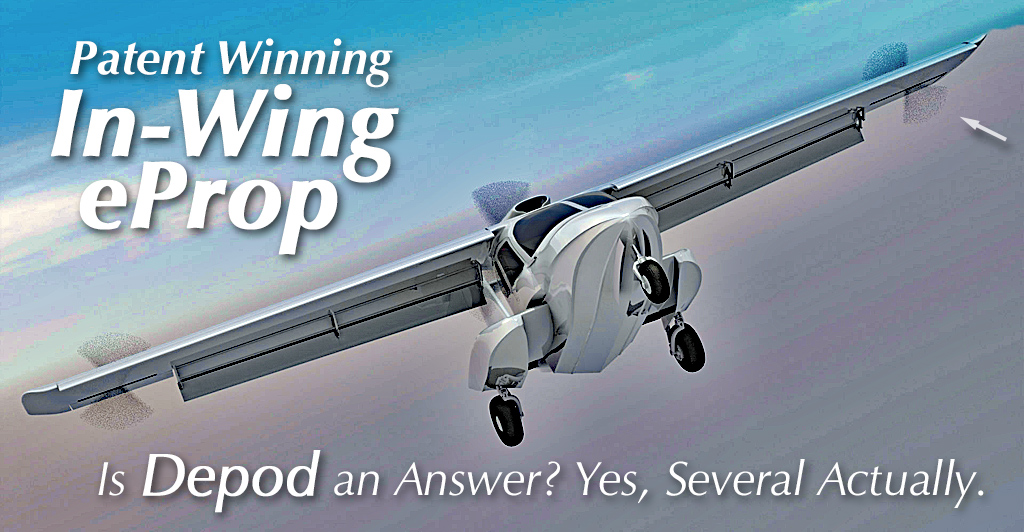
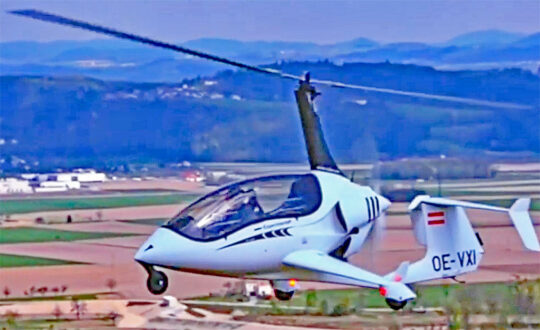 From eleven years ago comes the #3 in our list of
From eleven years ago comes the #3 in our list of 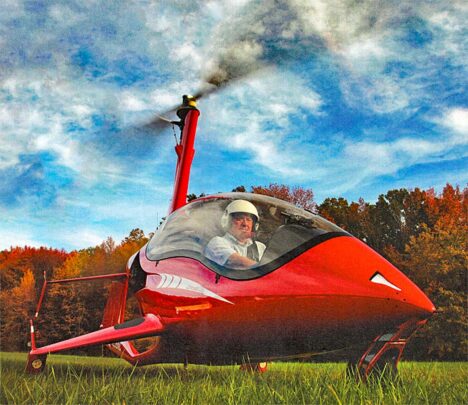 Great detail is unnecessary since you cannot buy a new ArrowCopter and I know of no used ones for sale although at least two were sold into the United States (they appear in pictures). Still, it's worthwhile to look at some of its unique qualities.
American gyroplane enthusiasts first saw ArrowCopter back in 2014, only three years after its maiden flight. If you were at Bensen Days that year and admired ArrowCopter, you may be aware you've seen nothing since.
Great detail is unnecessary since you cannot buy a new ArrowCopter and I know of no used ones for sale although at least two were sold into the United States (they appear in pictures). Still, it's worthwhile to look at some of its unique qualities.
American gyroplane enthusiasts first saw ArrowCopter back in 2014, only three years after its maiden flight. If you were at Bensen Days that year and admired ArrowCopter, you may be aware you've seen nothing since.
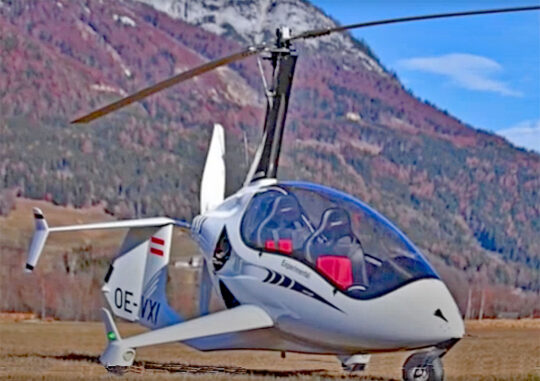 ArrowCopter's aerodynamically shaped landing gear strakes provide lift in horizontal flight, claimed some reviewers, and serve as fuel tanks. This design feature is one of several distinctive ideas that ArrowCopter designer Dietmar Fuchs incorporated.
As ArrowCopter accelerated down the runway, pilots looked for 60 mph (52 knots) and 340 rotor rpm. At that point ArrowCopter is ready to launch. Climb out occurs at 60 mph while cruise speed is 99 mph (86 knots). ArrowCopter's never-exceed speed was 120 mph (104 knots).
Non-gyroplane pilots may not find that particularly fast. Certainly, it is not compared to a fixed-wing, high-powered mLSA aircraft. As gyros go, though, that's fairly quick. It's smooth lines explain much.
What you should know is that gyroplanes are some of the best aircraft in recreational aviation at performing well in stronger winds. This is true of all gyroplanes, not only ArrowCopter.
ArrowCopter's aerodynamically shaped landing gear strakes provide lift in horizontal flight, claimed some reviewers, and serve as fuel tanks. This design feature is one of several distinctive ideas that ArrowCopter designer Dietmar Fuchs incorporated.
As ArrowCopter accelerated down the runway, pilots looked for 60 mph (52 knots) and 340 rotor rpm. At that point ArrowCopter is ready to launch. Climb out occurs at 60 mph while cruise speed is 99 mph (86 knots). ArrowCopter's never-exceed speed was 120 mph (104 knots).
Non-gyroplane pilots may not find that particularly fast. Certainly, it is not compared to a fixed-wing, high-powered mLSA aircraft. As gyros go, though, that's fairly quick. It's smooth lines explain much.
What you should know is that gyroplanes are some of the best aircraft in recreational aviation at performing well in stronger winds. This is true of all gyroplanes, not only ArrowCopter.
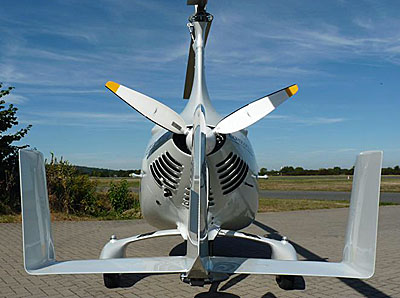
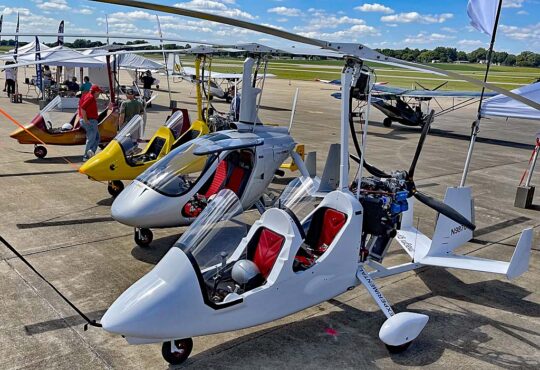

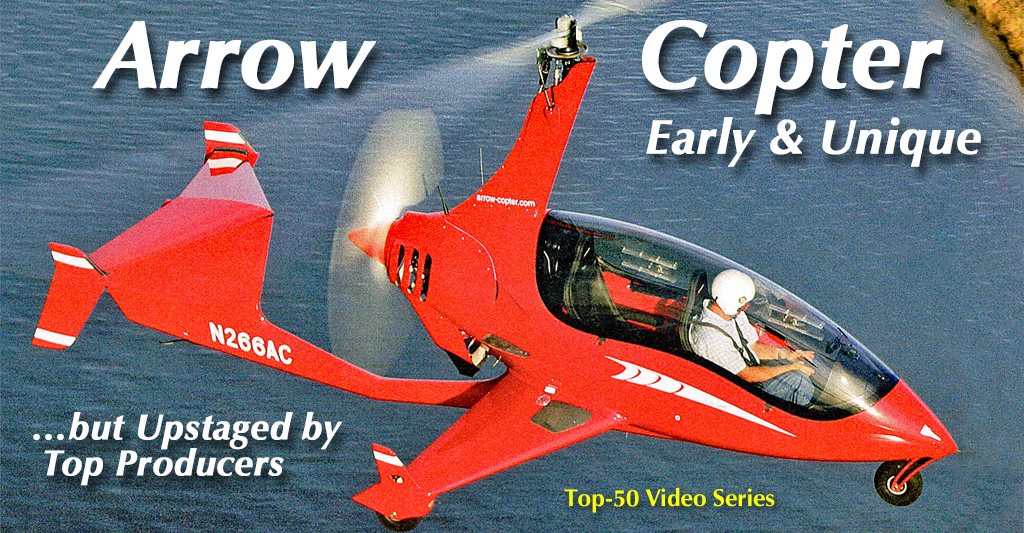
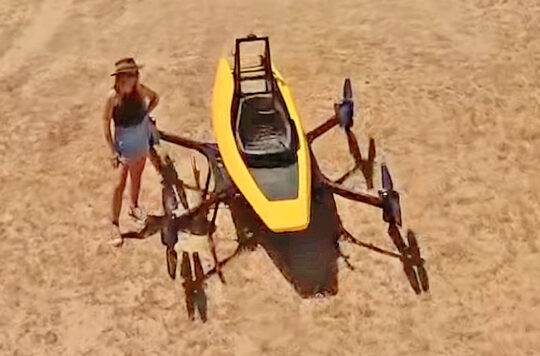 Fine. That's the sales pitch and apparently it's working because more than 350 companies around the globe have raised billions of dollars to pursue their dreams yet the first entries remain far from market.
Several people at the very pinnacle of FAA have departed the agency and are now working for air taxi developers (naturally, they are often called by some term other than the mundane "air taxi" label). Even the late Acting Administrator Billy Nolan split for a big job at one of these companies.
Fine. That's the sales pitch and apparently it's working because more than 350 companies around the globe have raised billions of dollars to pursue their dreams yet the first entries remain far from market.
Several people at the very pinnacle of FAA have departed the agency and are now working for air taxi developers (naturally, they are often called by some term other than the mundane "air taxi" label). Even the late Acting Administrator Billy Nolan split for a big job at one of these companies.
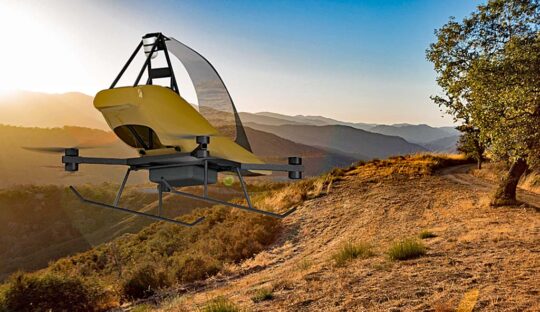 What we've got now is a total of five current entries in the Part 103 multicopter race. Think about that.
You never heard of these aerial contraptions until a very few years ago. Yet we have five entries purely as Part 103 vehicles. Honestly, I've watched closely and we've haven't seen that many new Part 103 candidates in years.
What we've got now is a total of five current entries in the Part 103 multicopter race. Think about that.
You never heard of these aerial contraptions until a very few years ago. Yet we have five entries purely as Part 103 vehicles. Honestly, I've watched closely and we've haven't seen that many new Part 103 candidates in years.
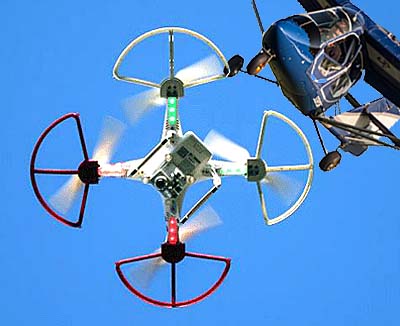 What you have seen up close, I'm betting, is smaller "drones," usually quad copters than can be flown with a radio-control aircraft handset. You may have flown or owned one.
I had a DJI Vision quadcopter for a while. I enjoyed flying it and used it to learn more about these things. Yet what I always wanted was a person-sized version that I could take for a local flight.
I've mentioned this fanciful dream to a number of aviators. If I ask fellow pilots if they would like to take one for a spin, the answer is commonly not only, "Yes," but "Absolutely!" Of course, all of us who are similarly enthusiastic harbor concerns that the software must be exceptionally robust. It may be to that point now; I simply don't know. When flight control software is highly reliable, these multicopters might become the safest aircraft you could fly.
When fully proven, lots of people may want to go aloft. In fact, I'll bet hugely more people will do this than will go pay for conventional flying lessons.
Here are the five currently vying to capture your business:
What you have seen up close, I'm betting, is smaller "drones," usually quad copters than can be flown with a radio-control aircraft handset. You may have flown or owned one.
I had a DJI Vision quadcopter for a while. I enjoyed flying it and used it to learn more about these things. Yet what I always wanted was a person-sized version that I could take for a local flight.
I've mentioned this fanciful dream to a number of aviators. If I ask fellow pilots if they would like to take one for a spin, the answer is commonly not only, "Yes," but "Absolutely!" Of course, all of us who are similarly enthusiastic harbor concerns that the software must be exceptionally robust. It may be to that point now; I simply don't know. When flight control software is highly reliable, these multicopters might become the safest aircraft you could fly.
When fully proven, lots of people may want to go aloft. In fact, I'll bet hugely more people will do this than will go pay for conventional flying lessons.
Here are the five currently vying to capture your business:
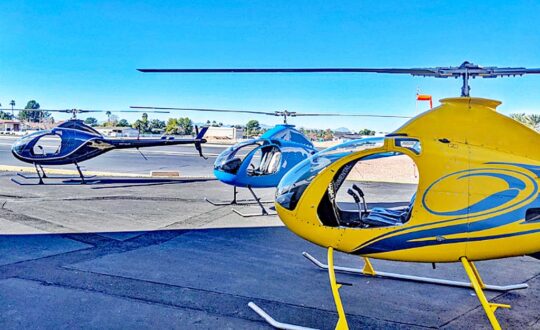
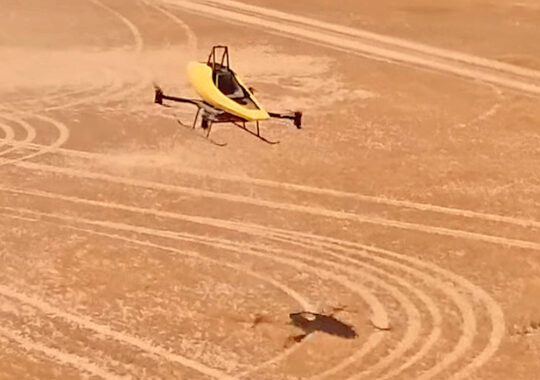
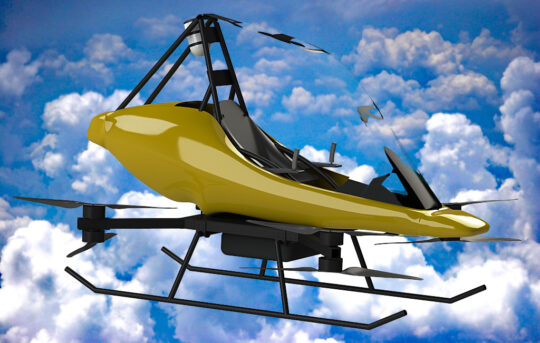 Rotor X said, "Dragon can carry one pilot who is over 6 foot-6 and weighs up to 250 pounds." Dragon can fly "for up to 20 minutes depending on the weight of the pilot and the air density where the aircraft is flying."
Development of Dragon eVTOL ultralight kit was funded entirely by Advanced Tactics, Rotor X reported. Dragon is licensed by Rotor X to produce, market, and sell. "The first production Dragon kit is expected to roll off the assembly line in Chandler, Arizona by the fall of 2023." Pre-order price was stated at $85,000 "for the first 100 Dragon kits sold." Then the kit price will rise to $99,000.
Rotor X said, "Dragon can carry one pilot who is over 6 foot-6 and weighs up to 250 pounds." Dragon can fly "for up to 20 minutes depending on the weight of the pilot and the air density where the aircraft is flying."
Development of Dragon eVTOL ultralight kit was funded entirely by Advanced Tactics, Rotor X reported. Dragon is licensed by Rotor X to produce, market, and sell. "The first production Dragon kit is expected to roll off the assembly line in Chandler, Arizona by the fall of 2023." Pre-order price was stated at $85,000 "for the first 100 Dragon kits sold." Then the kit price will rise to $99,000.
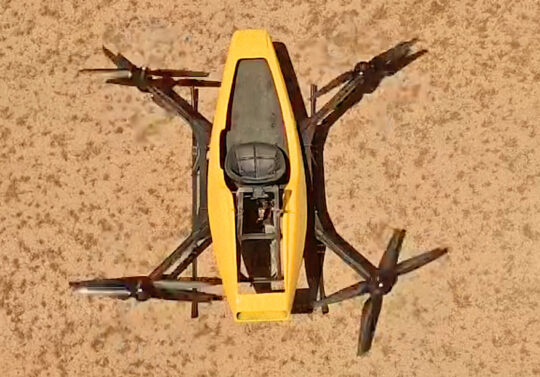 Ready to go along?
Ready to go along?
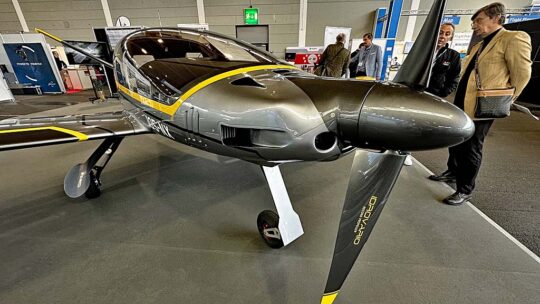 I was at
I was at 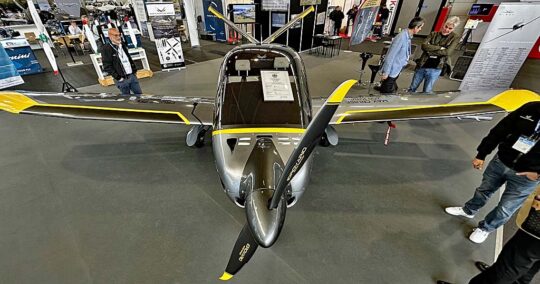
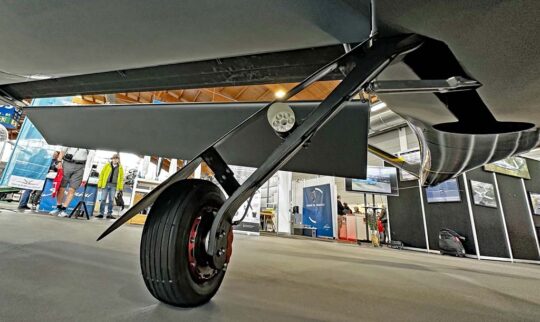
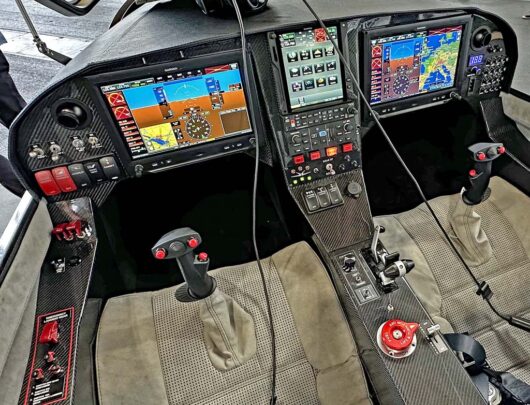 Handling
Handling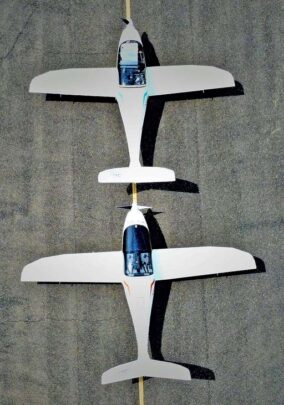
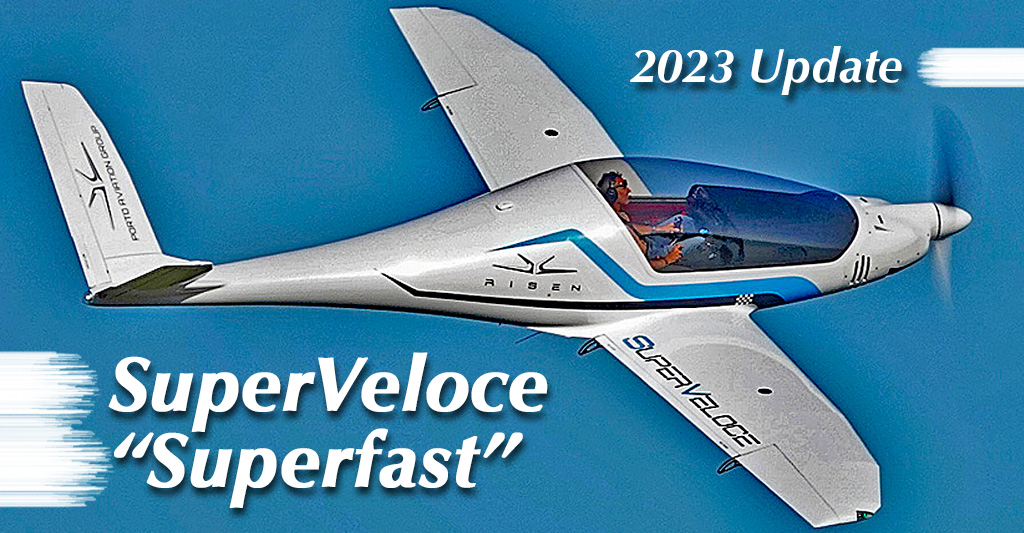
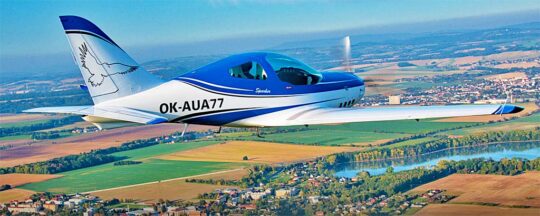 We are headed into an interesting period of aircraft development and the subject of this article is a perfect example. Welcome to TL Ultralight's enhanced Sparker.
We are headed into an interesting period of aircraft development and the subject of this article is a perfect example. Welcome to TL Ultralight's enhanced Sparker.
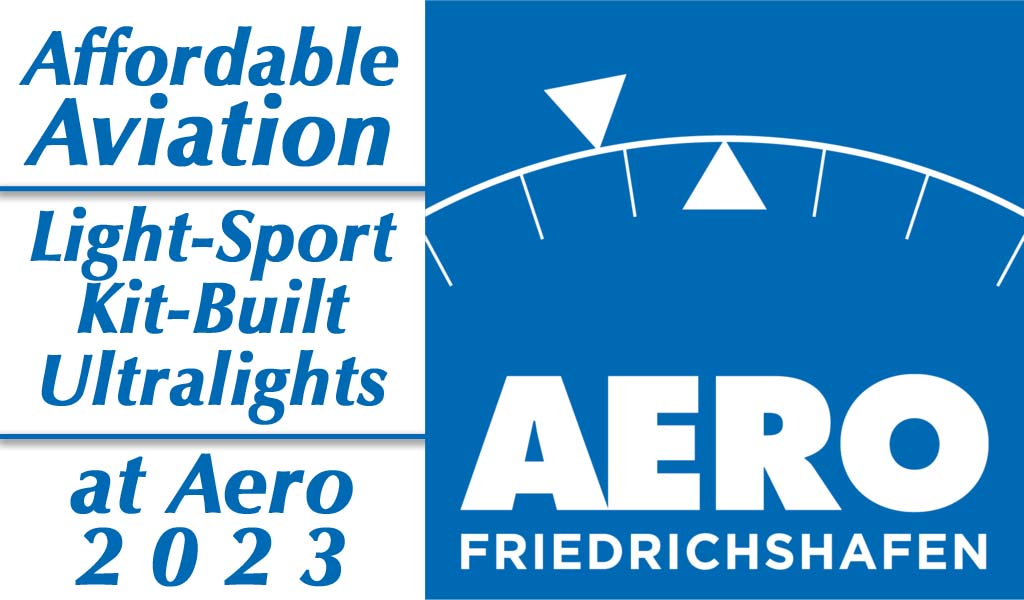 The model was introduced to the European 600 kilogram (1,320 pound) standard but over the last year it has gone through an extensive evaluation and upgrade to carry a 750 kilogram load (1,653 pounds). It was also revised to accommodate Rotax's 915iS and 916iS engines.
With greater capacity and with 160 horsepower available, I'd call this a mLSA or Mosaic-ready Light-Sport Aircraft.
The model was introduced to the European 600 kilogram (1,320 pound) standard but over the last year it has gone through an extensive evaluation and upgrade to carry a 750 kilogram load (1,653 pounds). It was also revised to accommodate Rotax's 915iS and 916iS engines.
With greater capacity and with 160 horsepower available, I'd call this a mLSA or Mosaic-ready Light-Sport Aircraft.

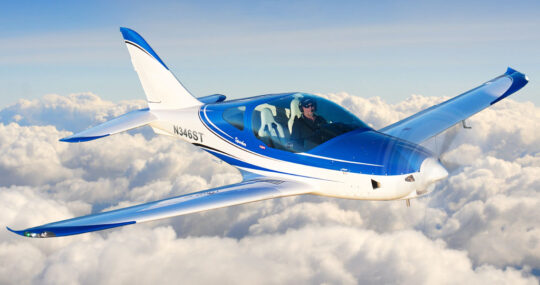 The last aircraft released by TL in 2015 was Stream, their elegant take on a tandem-seating LSA. I flew with Trey Murdaugh, proprietor of TL Sport Aircraft, the North American representative for the brand. Read about
The last aircraft released by TL in 2015 was Stream, their elegant take on a tandem-seating LSA. I flew with Trey Murdaugh, proprietor of TL Sport Aircraft, the North American representative for the brand. Read about 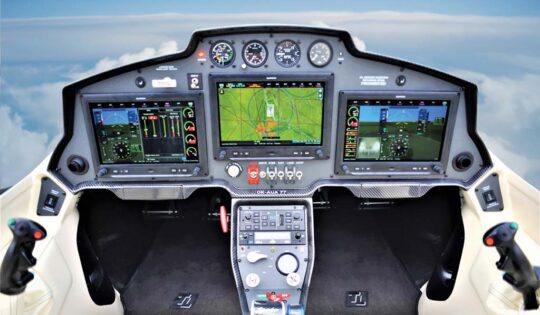
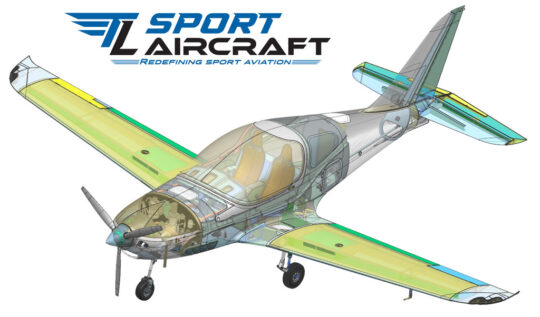 As I hear your groans over the prices we've seen in the newest Light-Sport Aircraft, please consider the prices on everything else you buy. Since Covid, many things you buy have gone up substantially in price; many items have doubled in price. That fact does not ease your financial burden and it certainly puts Sparker out of reach for some, maybe most pilots. That does not mean it is incorrectly priced; it simply may not fit your budget.
Perhaps the best news about Mosaic is that it will not negatively impact the LSA you have come to know and love. Many of those airplanes remain available at much more affordable prices. In addition, a growing number of used LSA are now available at even lower cost.
As I hear your groans over the prices we've seen in the newest Light-Sport Aircraft, please consider the prices on everything else you buy. Since Covid, many things you buy have gone up substantially in price; many items have doubled in price. That fact does not ease your financial burden and it certainly puts Sparker out of reach for some, maybe most pilots. That does not mean it is incorrectly priced; it simply may not fit your budget.
Perhaps the best news about Mosaic is that it will not negatively impact the LSA you have come to know and love. Many of those airplanes remain available at much more affordable prices. In addition, a growing number of used LSA are now available at even lower cost.
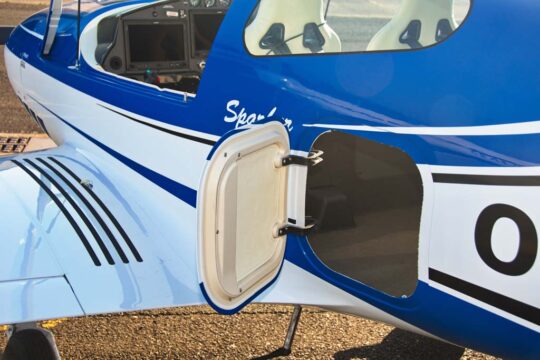 Yet if you have the budget or some partners, Sparker might be just the airplane to ignite your flying interests.
"The first Sparkers will come in under the Experimental Exhibition category," said Trey. He and TL personnel will investigate mLSA approval after Mosaic is out.
Come
Yet if you have the budget or some partners, Sparker might be just the airplane to ignite your flying interests.
"The first Sparkers will come in under the Experimental Exhibition category," said Trey. He and TL personnel will investigate mLSA approval after Mosaic is out.
Come 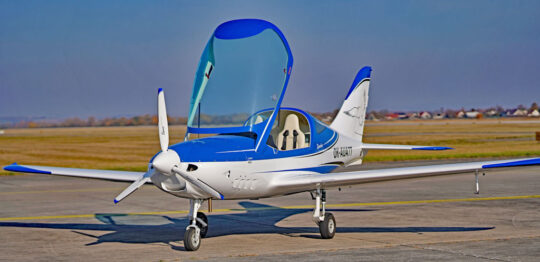 Once Mosaic arrives, I expect you will find TL Ultralight's Sparker to be an early aircraft to gain approval. Fortunately, pilots interested today don't need to wait until 2025 — the earliest date Mosaic could be fully available. Trey said the deluxe Sparker could be delivered in 7-8 months. Use the contact information below to obtain pricing and availability.
Once Mosaic arrives, I expect you will find TL Ultralight's Sparker to be an early aircraft to gain approval. Fortunately, pilots interested today don't need to wait until 2025 — the earliest date Mosaic could be fully available. Trey said the deluxe Sparker could be delivered in 7-8 months. Use the contact information below to obtain pricing and availability.
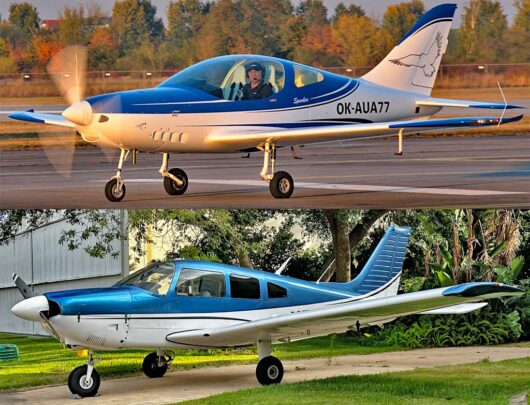
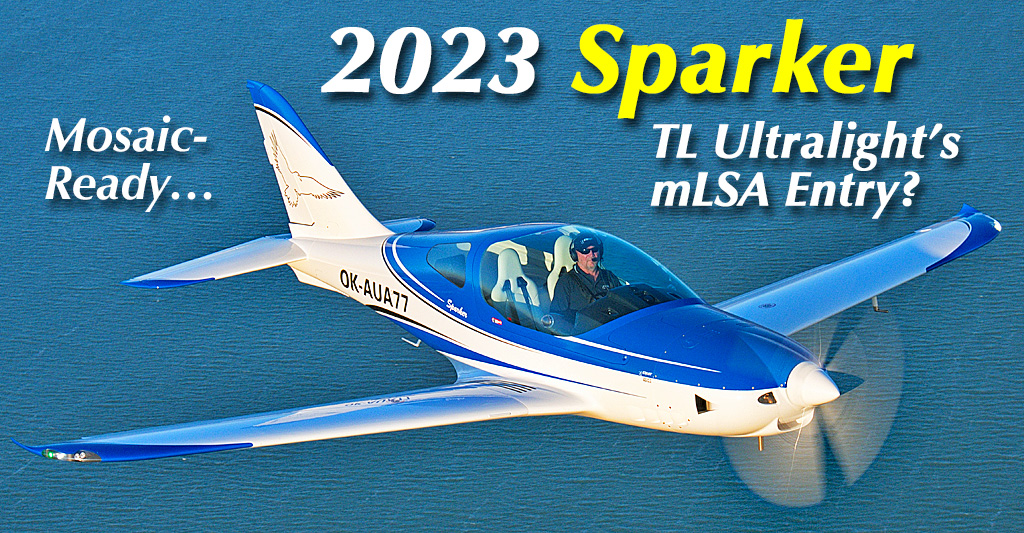

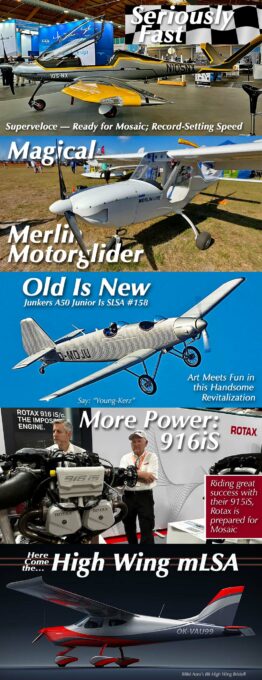 My series will touch on the top 50 most-watched videos on Videoman Dave's
My series will touch on the top 50 most-watched videos on Videoman Dave's 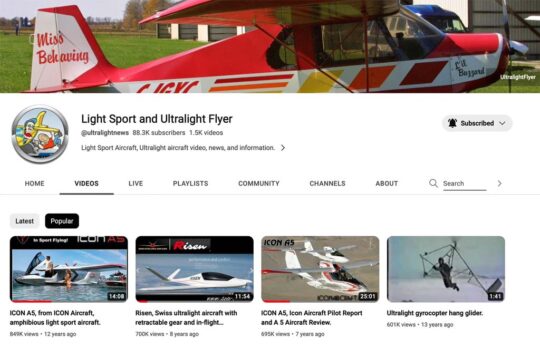
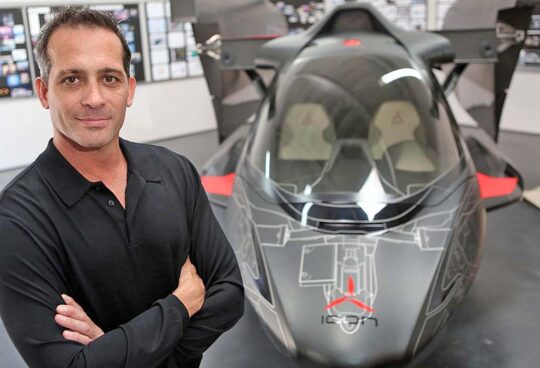
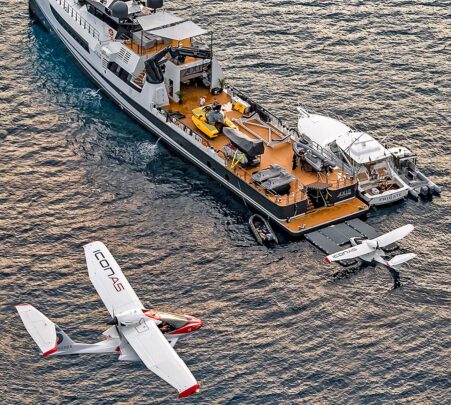
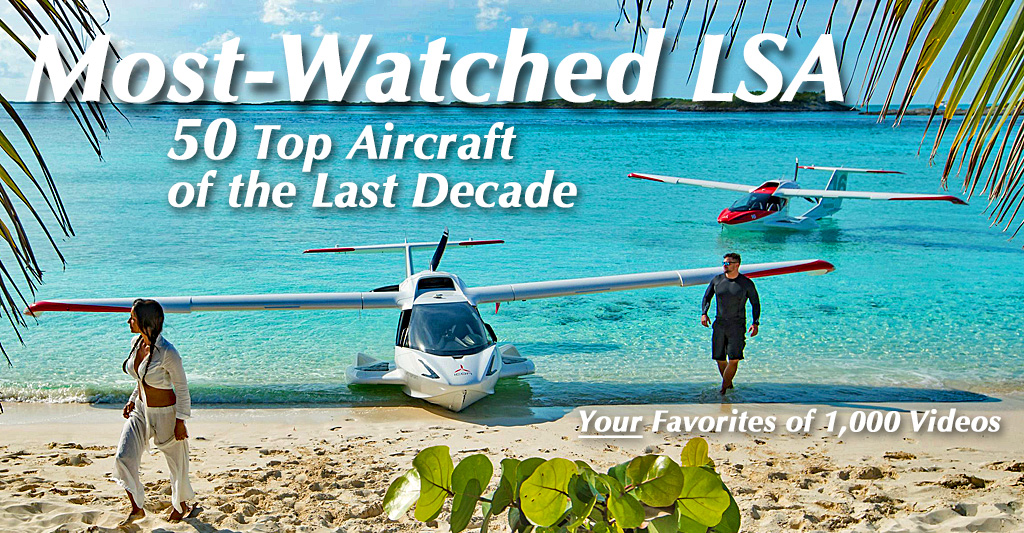
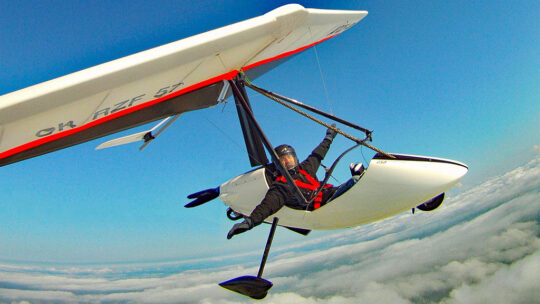 Air taxi ventures based on multicopter designs are drinking up funds by the tens or hundreds millions of dollars, probably billions by now. I don't have a shred of doubt that these will lead to genuine changes in transportation… but I would not hold my breath until such services become common. I suspect it will be many years yet.
However, today, electric propulsion for ultralight aircraft works quite well, especially when it serves a purpose. For soaring pilots, power is about getting to altitude where they can explore ridge, thermal, or wave lift. Those who love such flying, like me, seek out the best machine that might deliver that capability.
Air taxi ventures based on multicopter designs are drinking up funds by the tens or hundreds millions of dollars, probably billions by now. I don't have a shred of doubt that these will lead to genuine changes in transportation… but I would not hold my breath until such services become common. I suspect it will be many years yet.
However, today, electric propulsion for ultralight aircraft works quite well, especially when it serves a purpose. For soaring pilots, power is about getting to altitude where they can explore ridge, thermal, or wave lift. Those who love such flying, like me, seek out the best machine that might deliver that capability. 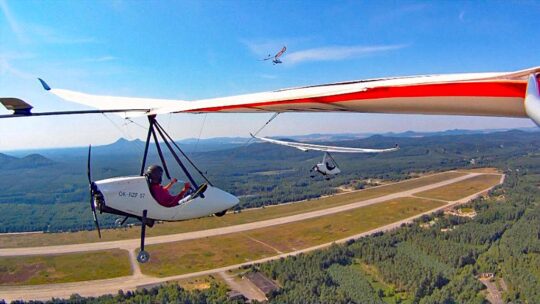 Felix Rühle is the designer behind the
Felix Rühle is the designer behind the 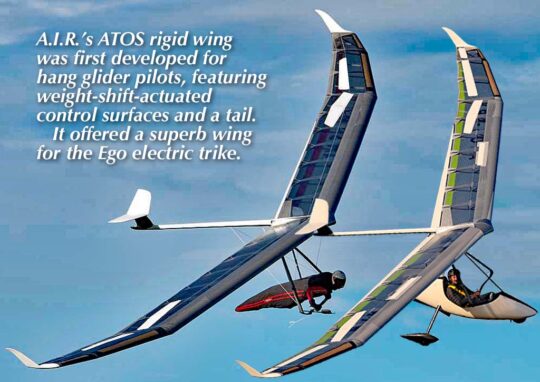
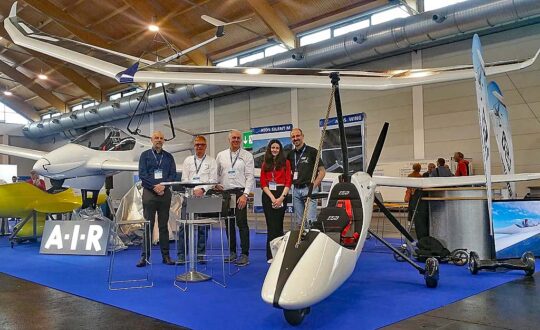
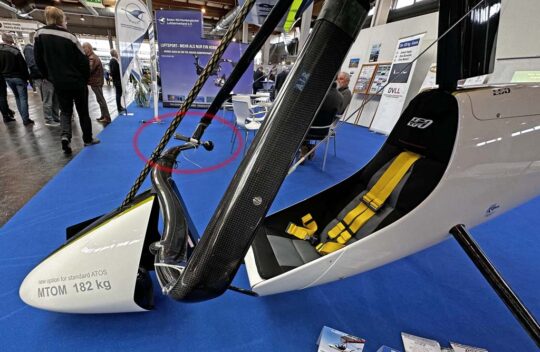
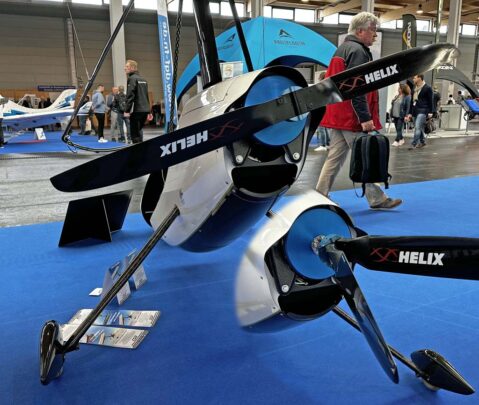 Ultralight Design noted, "We have been actively flying trikes with a history of operation over six years. When the battery installed in your trike reaches its lifetime, it will be possible to replace it with a new type. Thanks to the fast development in electric automotive industry we can expect new batteries with a double capacity and maybe half price."
Then they added, "Our sales statistics are definitely interesting. At present, 25% of the flying machines we are producing have an electric drive."
Ultralight Design noted, "We have been actively flying trikes with a history of operation over six years. When the battery installed in your trike reaches its lifetime, it will be possible to replace it with a new type. Thanks to the fast development in electric automotive industry we can expect new batteries with a double capacity and maybe half price."
Then they added, "Our sales statistics are definitely interesting. At present, 25% of the flying machines we are producing have an electric drive."
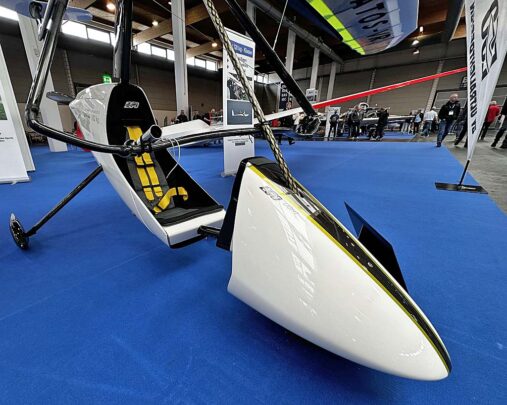 For those unsure of electric, Ultralight Design offers Ego trikes with combustion engines. Paramotor engines appropriate for Ego and ATOS have undergone a number of changes in last seven years, Ultralight Design said. "The result is a very good performance with a minimum fuel consumption of around 3 liters (0.75 gallons) per hour of flight. "The low fuel consumption of standard Mogas gives you over five hours endurance and over 300 kilometer (185 miles) range on one fuel tank.
To close, in a nearby photo you see the two-seat version Ultralight Design showed at Aero Friedrichshafen 2023. Rounding out their line is great but for true-blue soaring enthusiasts, Ego and ATOS might be a motorglider you can afford.
For those unsure of electric, Ultralight Design offers Ego trikes with combustion engines. Paramotor engines appropriate for Ego and ATOS have undergone a number of changes in last seven years, Ultralight Design said. "The result is a very good performance with a minimum fuel consumption of around 3 liters (0.75 gallons) per hour of flight. "The low fuel consumption of standard Mogas gives you over five hours endurance and over 300 kilometer (185 miles) range on one fuel tank.
To close, in a nearby photo you see the two-seat version Ultralight Design showed at Aero Friedrichshafen 2023. Rounding out their line is great but for true-blue soaring enthusiasts, Ego and ATOS might be a motorglider you can afford. 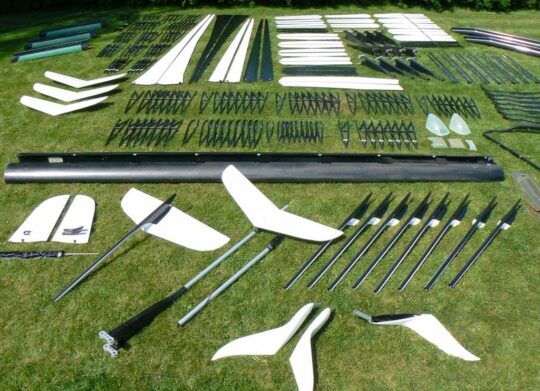
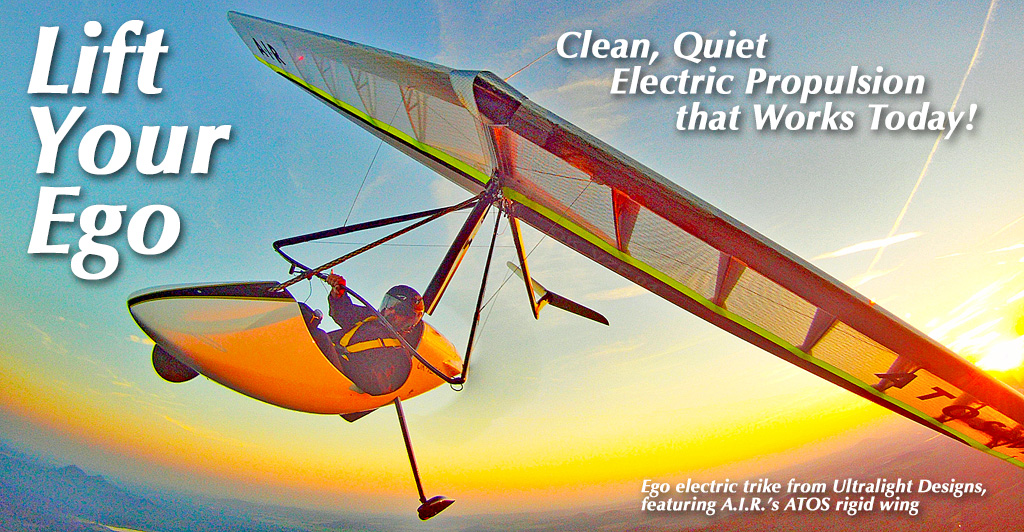
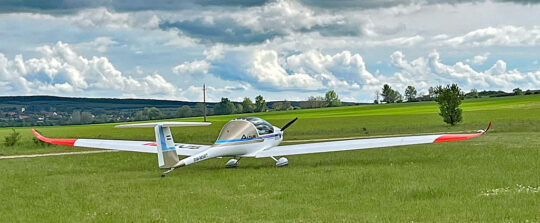 What made this choice of topics lucky was that as I was doing some investigation of this company and aircraft, I reached out to a local aviator who hails from the same country: Hungary. His name is Doma Andreka and he is the importer of
What made this choice of topics lucky was that as I was doing some investigation of this company and aircraft, I reached out to a local aviator who hails from the same country: Hungary. His name is Doma Andreka and he is the importer of 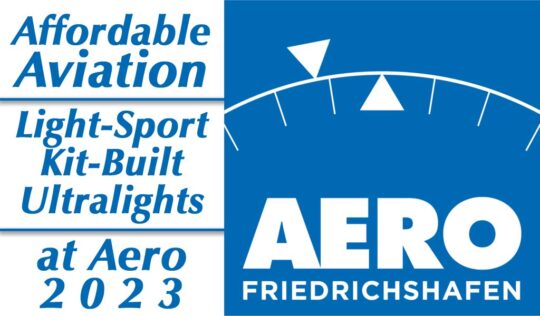 He is also part of
He is also part of 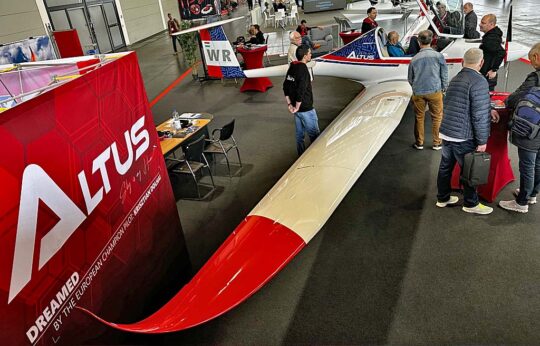 I was drawn by its lovely wings but the entire aircraft has appeal, although being intended for soaring flight, it may not be a roomy as some cross-country-oriented Light-Sport Aircraft.
Given a substantial versatility and range with "easily changeable wing extensions," you can have either a 36-foot-span speedster or a 49-foot soaring motorglider.
I was drawn by its lovely wings but the entire aircraft has appeal, although being intended for soaring flight, it may not be a roomy as some cross-country-oriented Light-Sport Aircraft.
Given a substantial versatility and range with "easily changeable wing extensions," you can have either a 36-foot-span speedster or a 49-foot soaring motorglider.
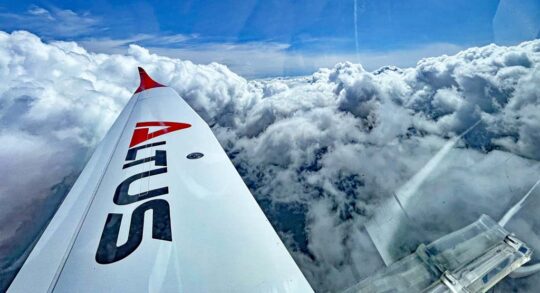 Altus took its maiden flight in May of 2018. Since that initial flight, "Altus spent over 800 hours in the air and earned 5 FAI world records without a single problem," reported the company.
During development, champion pilot and developer Krisztián Dolhai, also flew several FAI records including speed over a closed course and straight line. While Altus is a motorglider at heart, it scoots right up to the LSA speed limit.
Altus took its maiden flight in May of 2018. Since that initial flight, "Altus spent over 800 hours in the air and earned 5 FAI world records without a single problem," reported the company.
During development, champion pilot and developer Krisztián Dolhai, also flew several FAI records including speed over a closed course and straight line. While Altus is a motorglider at heart, it scoots right up to the LSA speed limit.
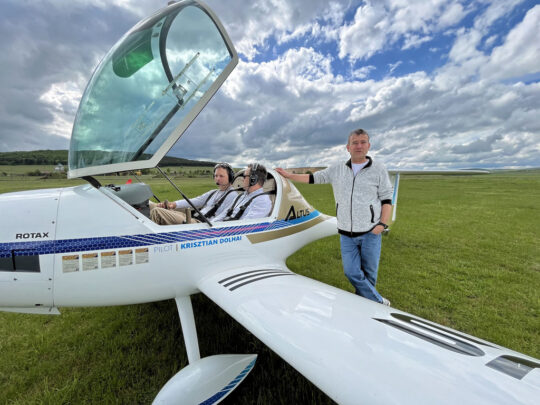
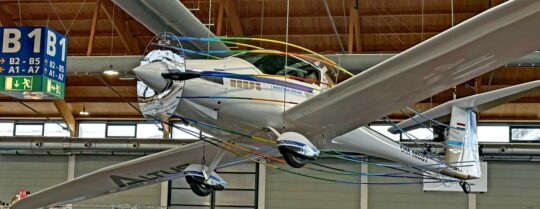 Let's make it simpler with an image of an intriguing display hoisted above an actual Altus. I love how they managed to depict the airflows and fix them to the aircraft without damaging the airframe or its ability to fly.
It's too early to get into price and further details about Altus. After this introduction, more will follow, perhaps later this month.
Let's make it simpler with an image of an intriguing display hoisted above an actual Altus. I love how they managed to depict the airflows and fix them to the aircraft without damaging the airframe or its ability to fly.
It's too early to get into price and further details about Altus. After this introduction, more will follow, perhaps later this month.
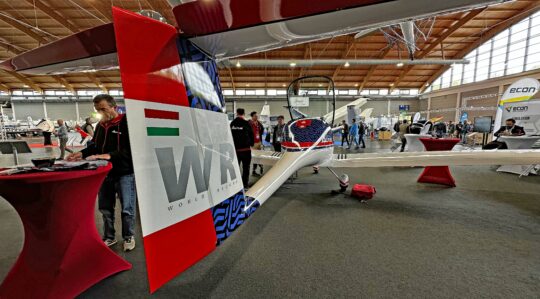 In this wonderful
In this wonderful 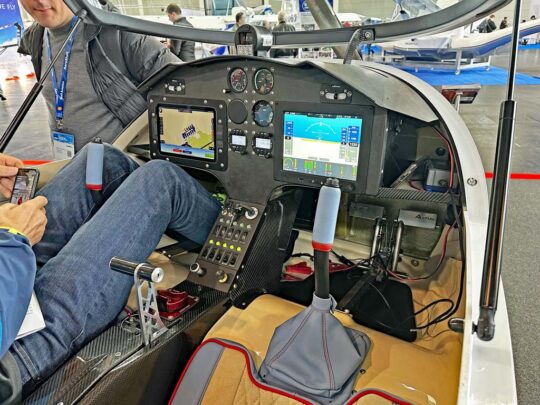 Read that again! Even if you are denied a conventional aviation medical, you may still fly a glider/motorglider. That is a significant difference, even from Sport Pilots flying Light-Sport Aircraft. Chip Erwin uses this argument for his Merlin motorglider (
Read that again! Even if you are denied a conventional aviation medical, you may still fly a glider/motorglider. That is a significant difference, even from Sport Pilots flying Light-Sport Aircraft. Chip Erwin uses this argument for his Merlin motorglider (